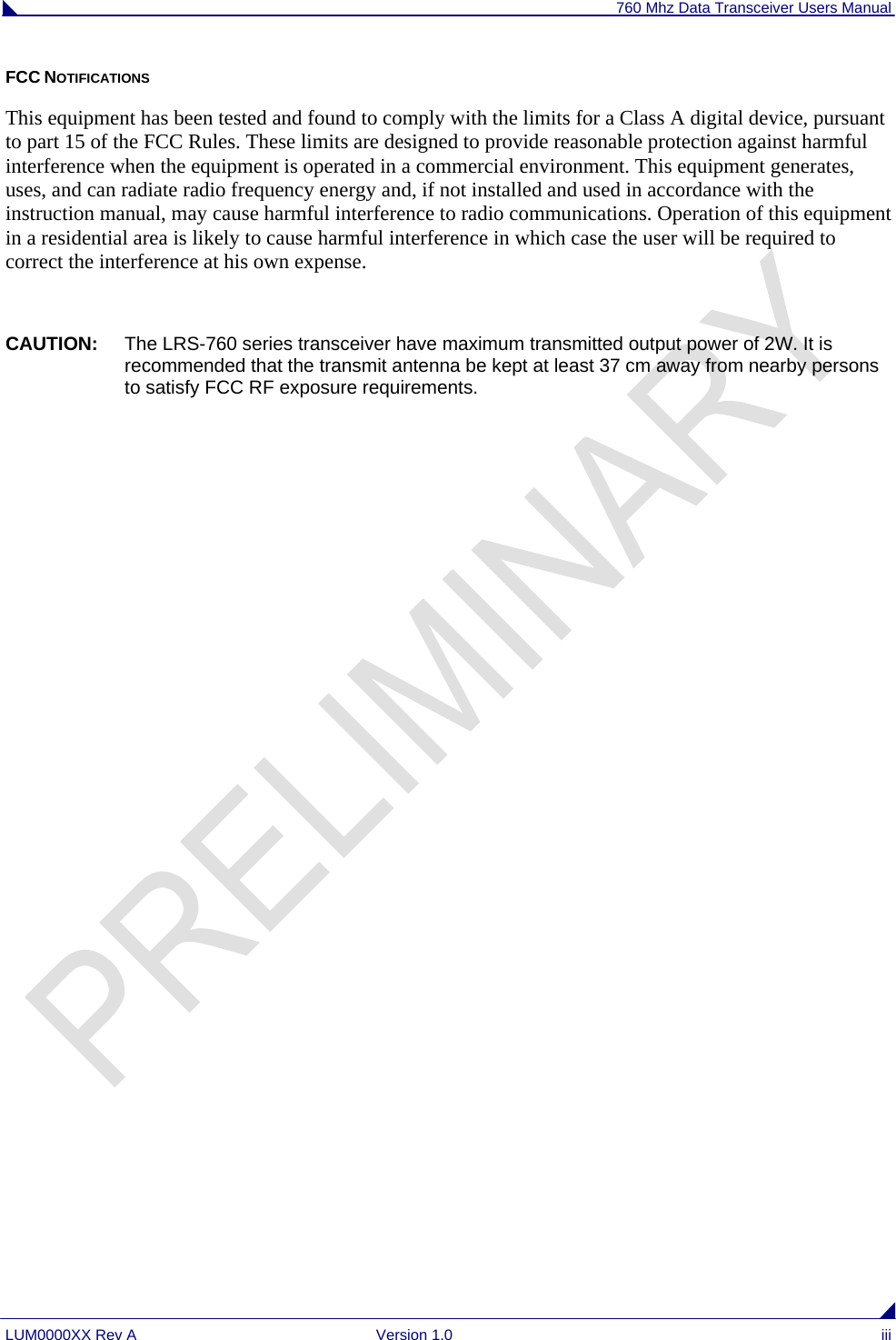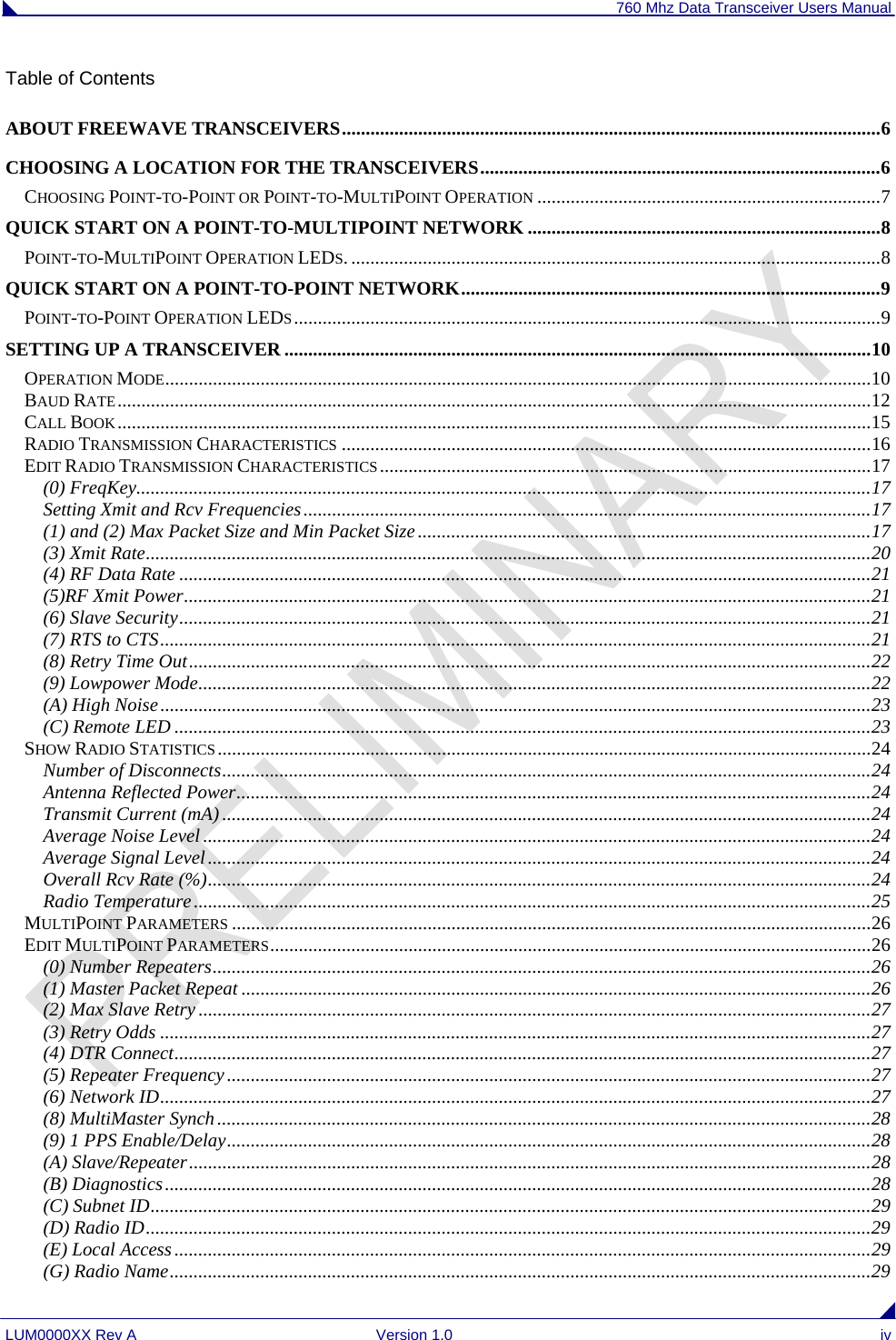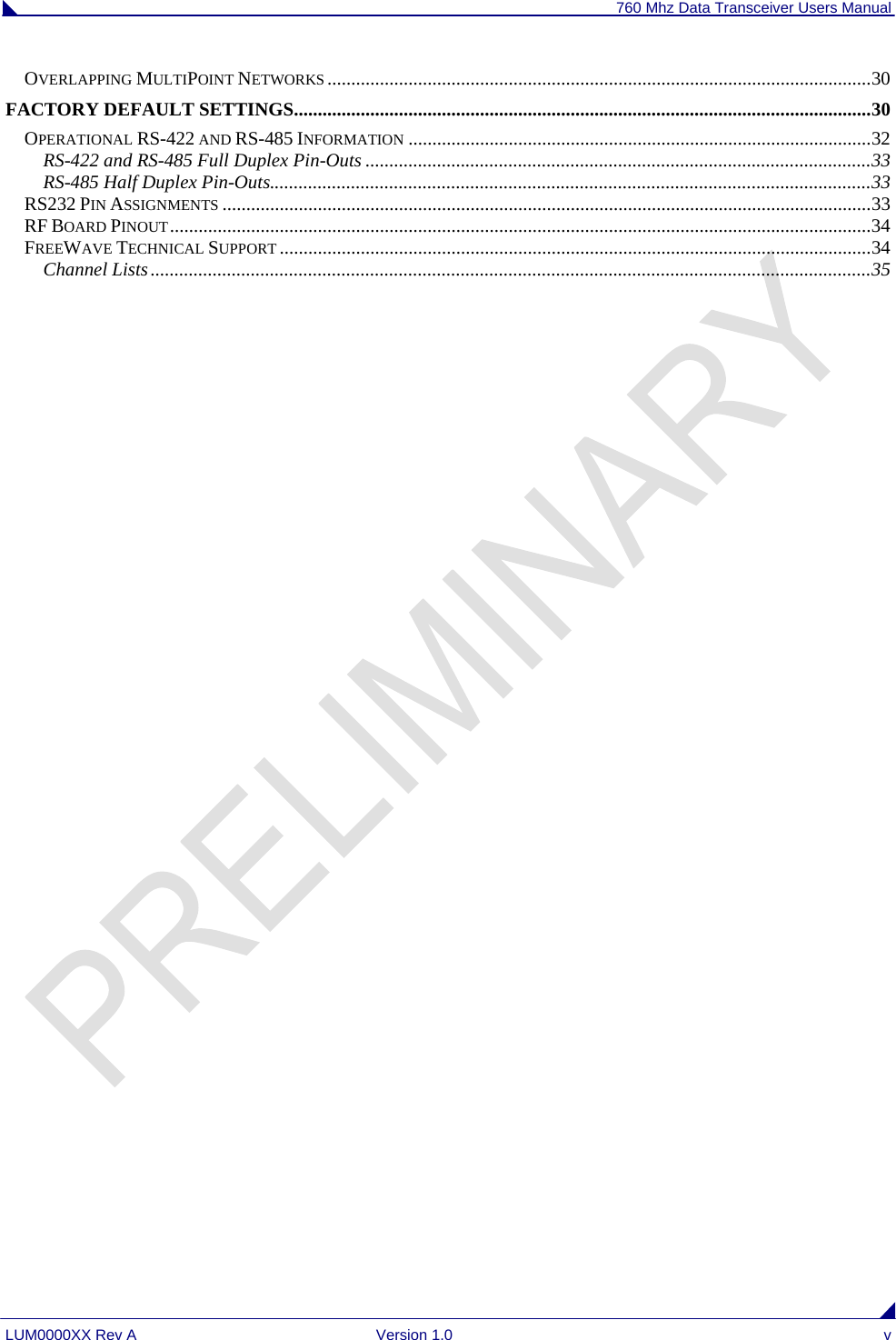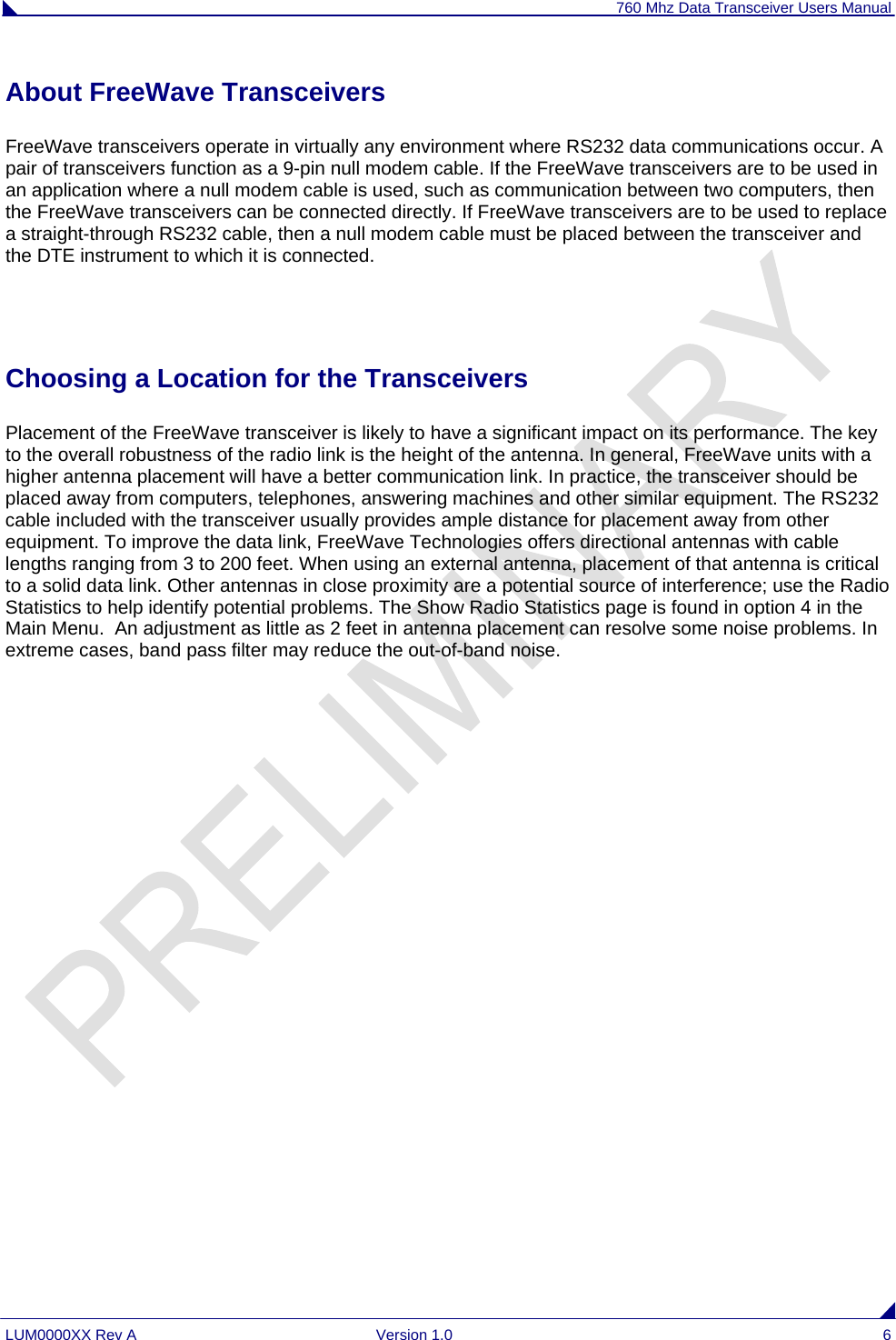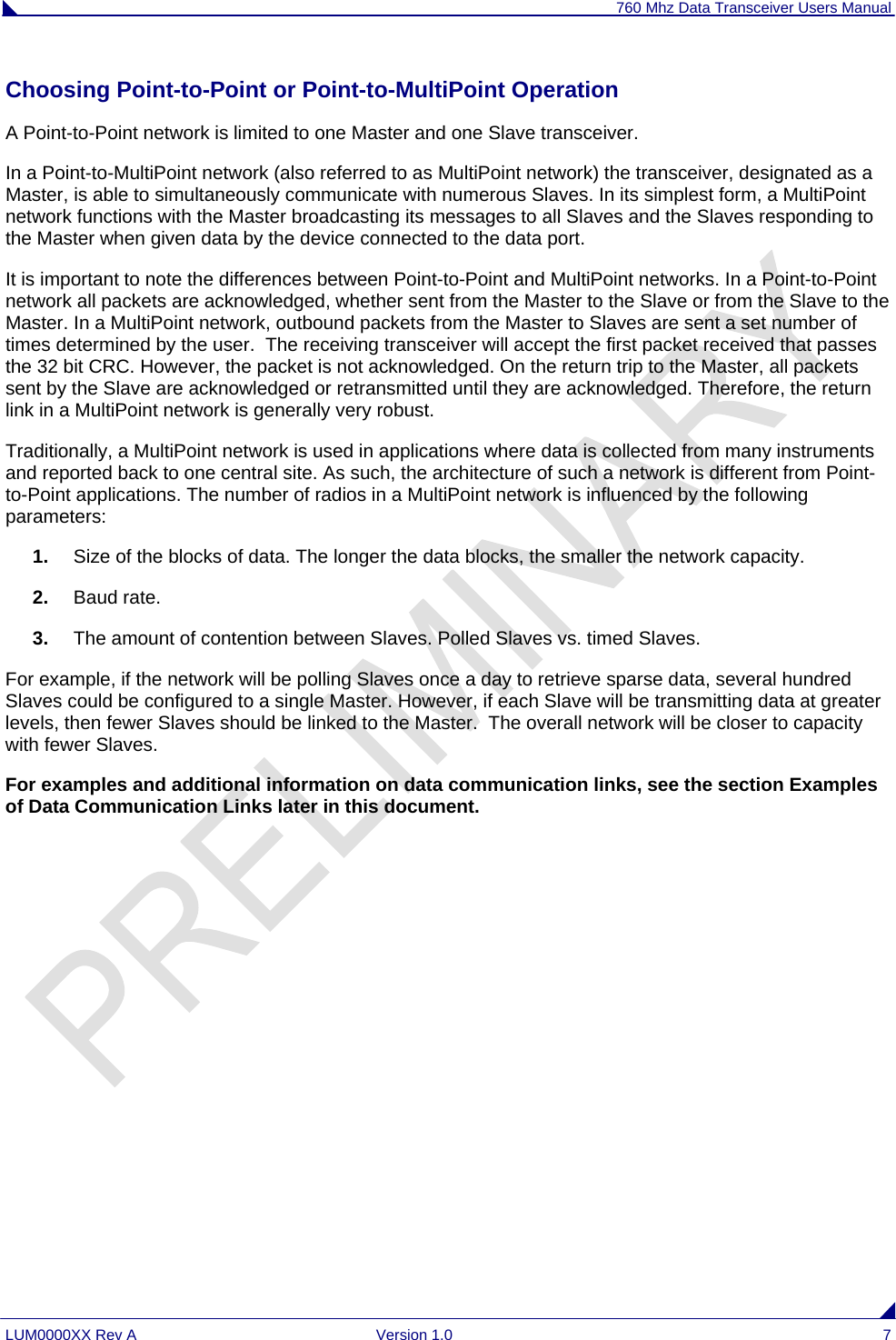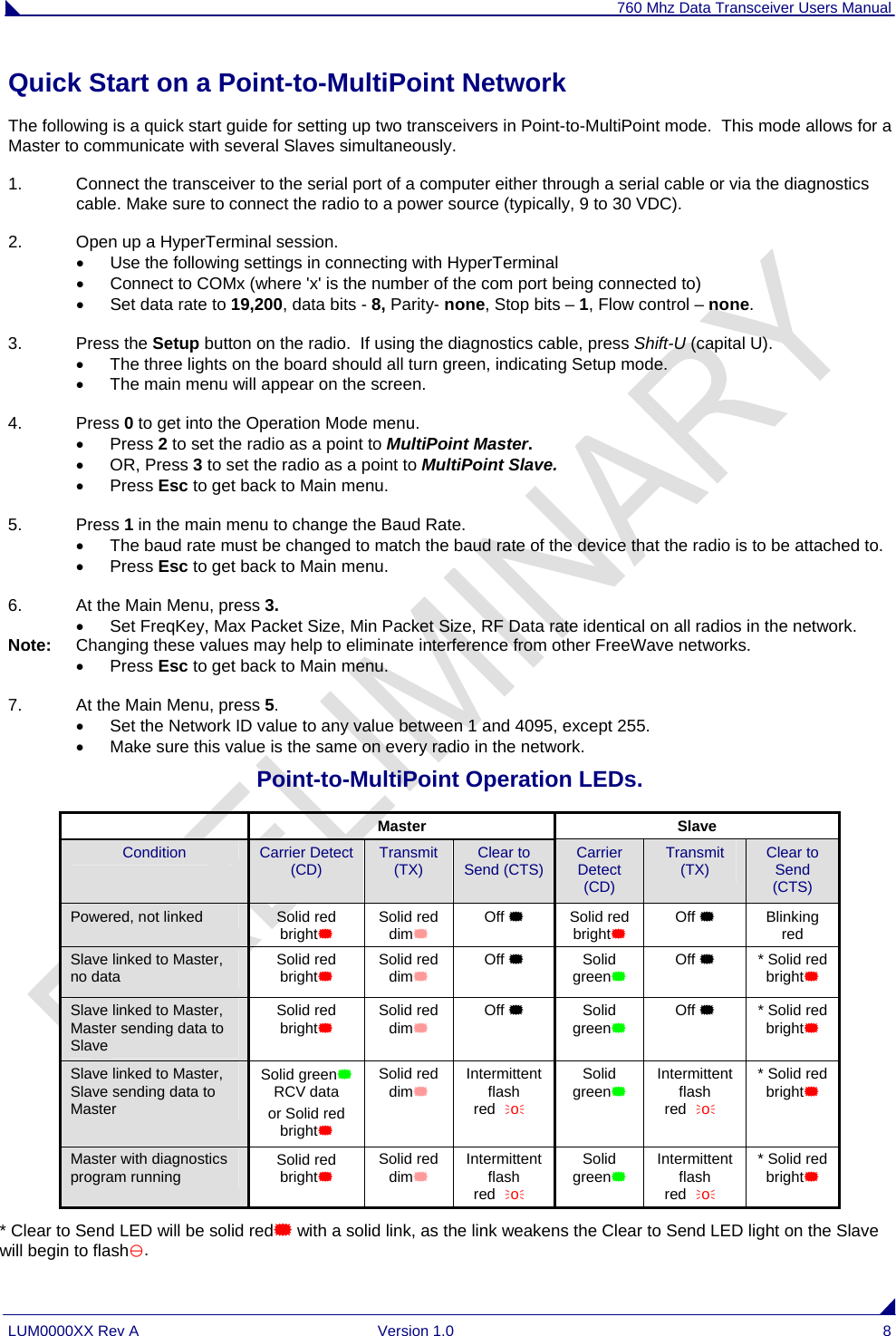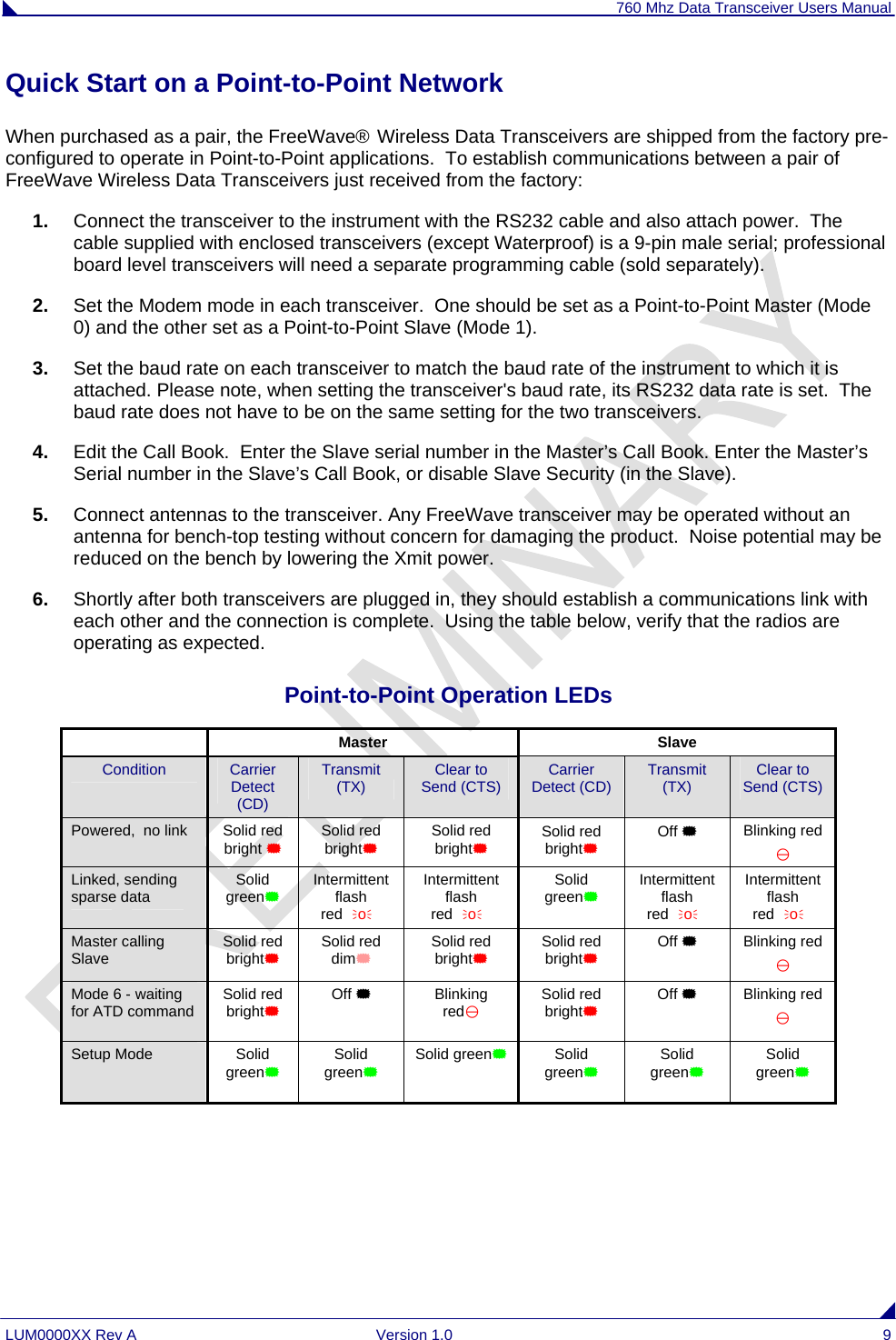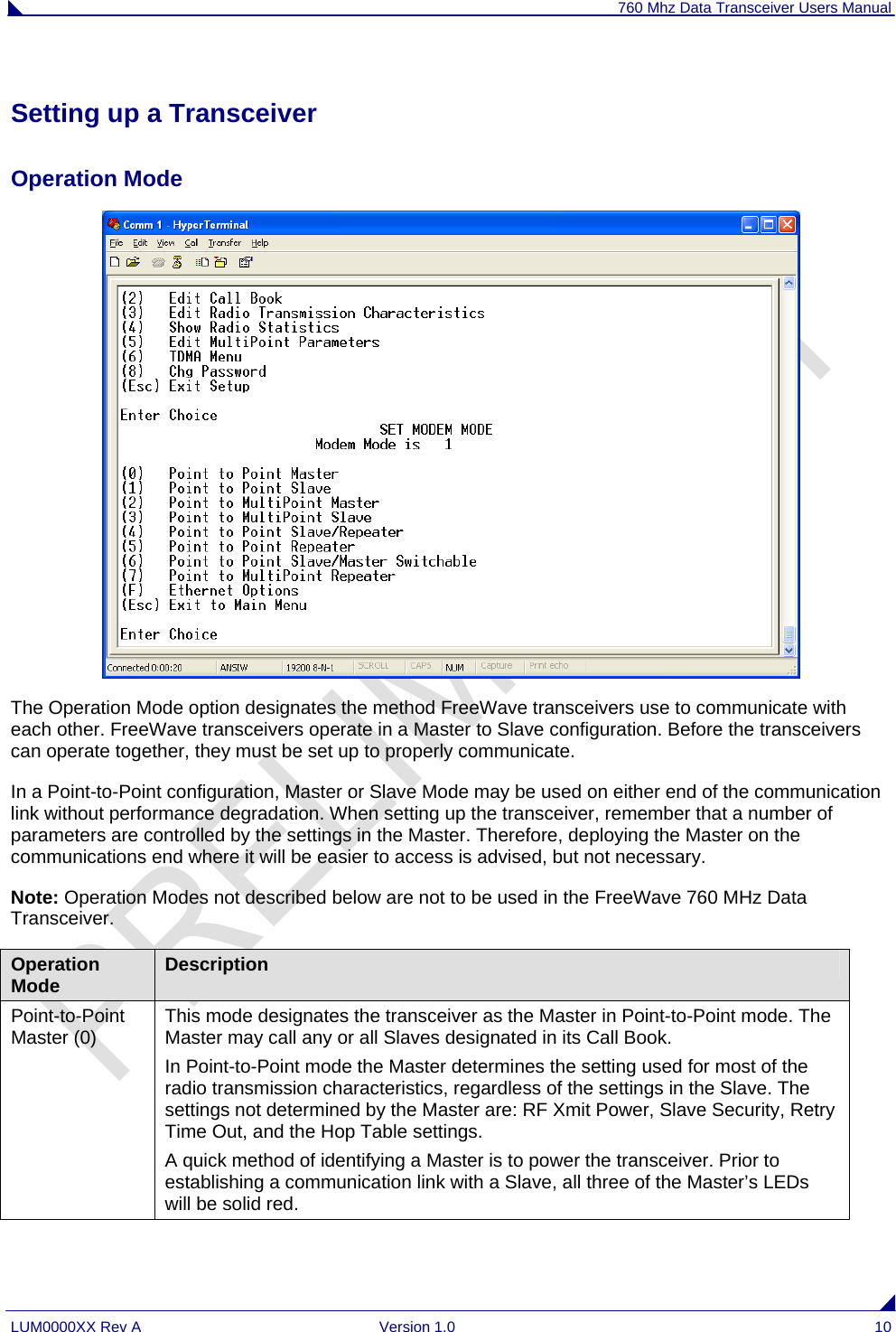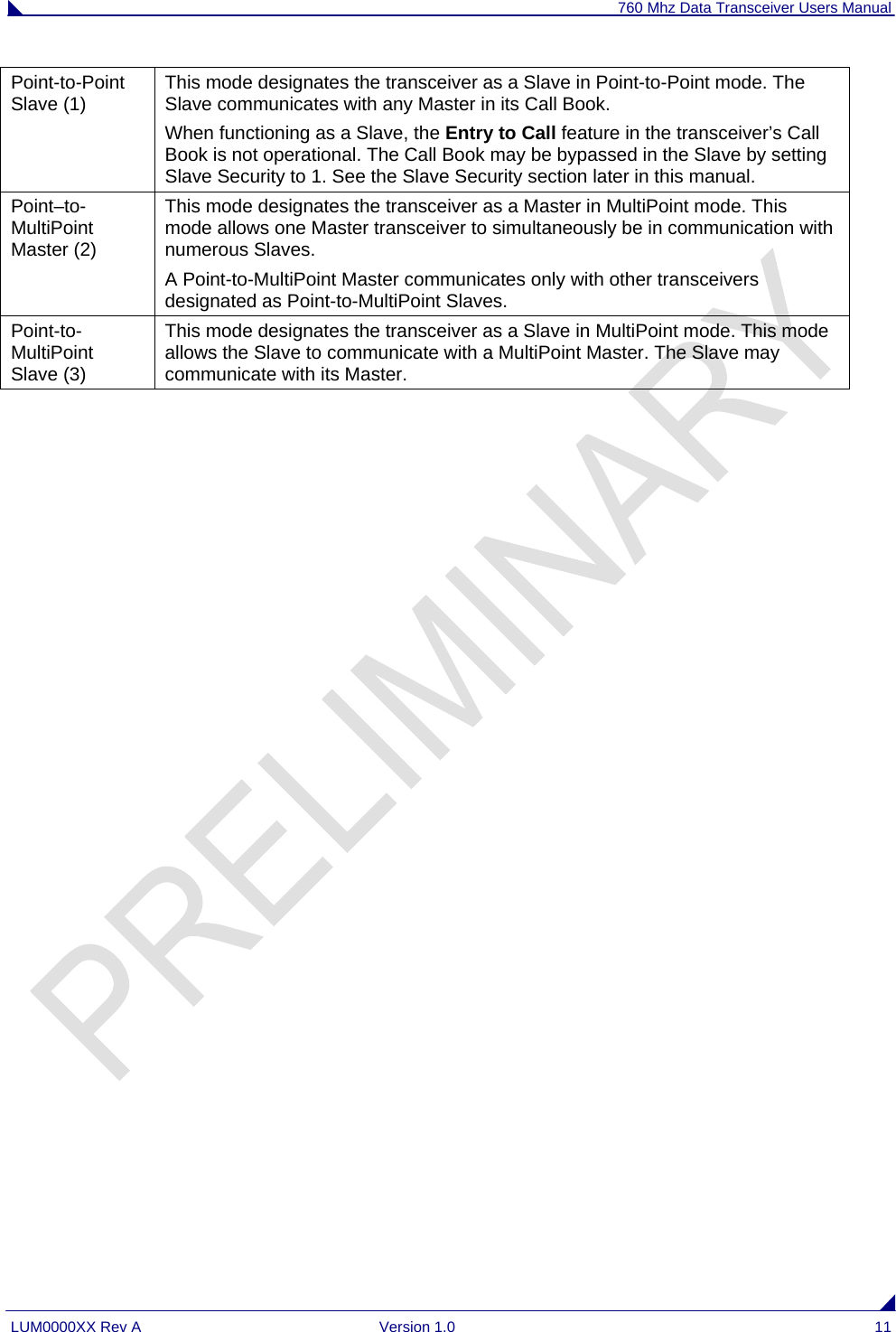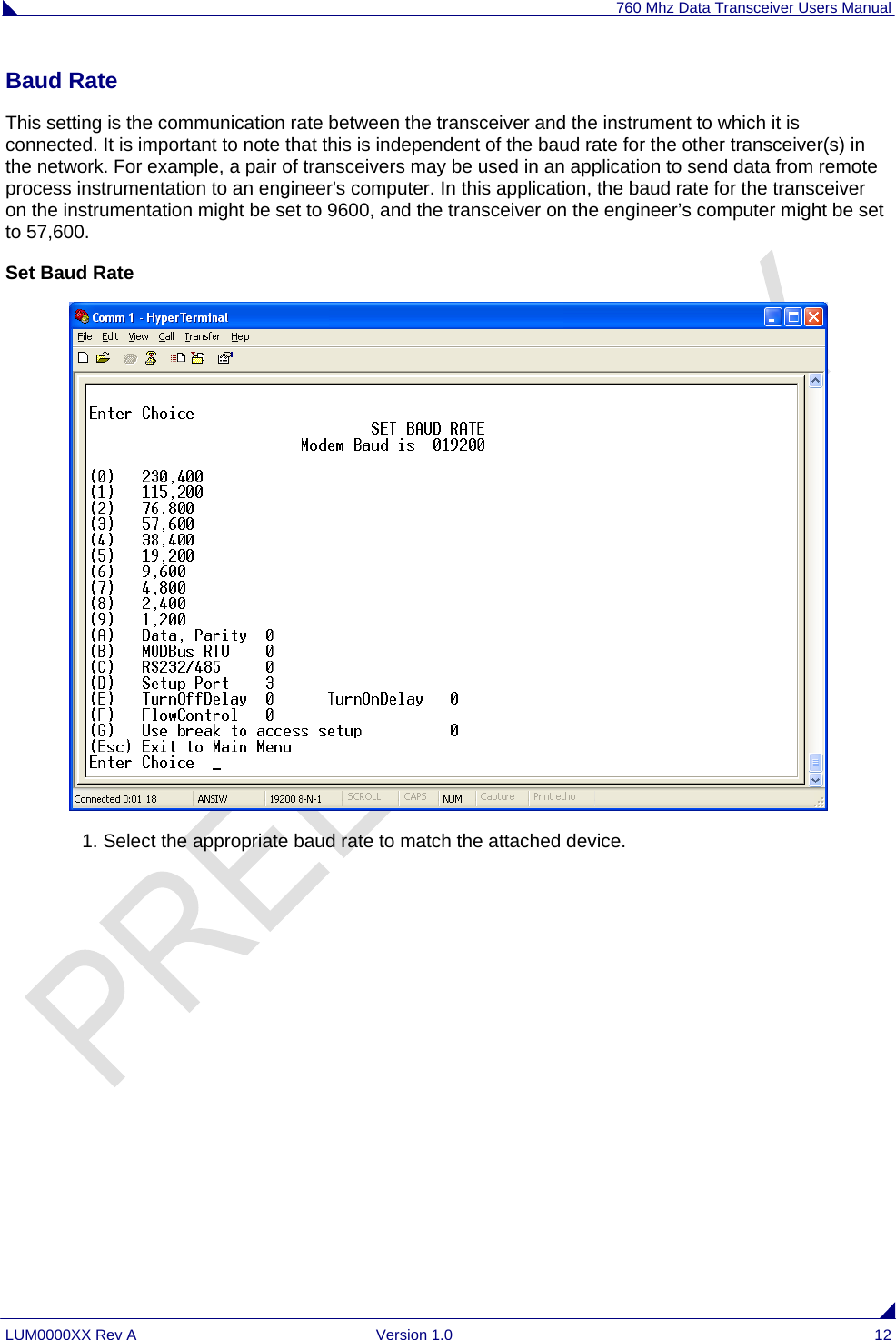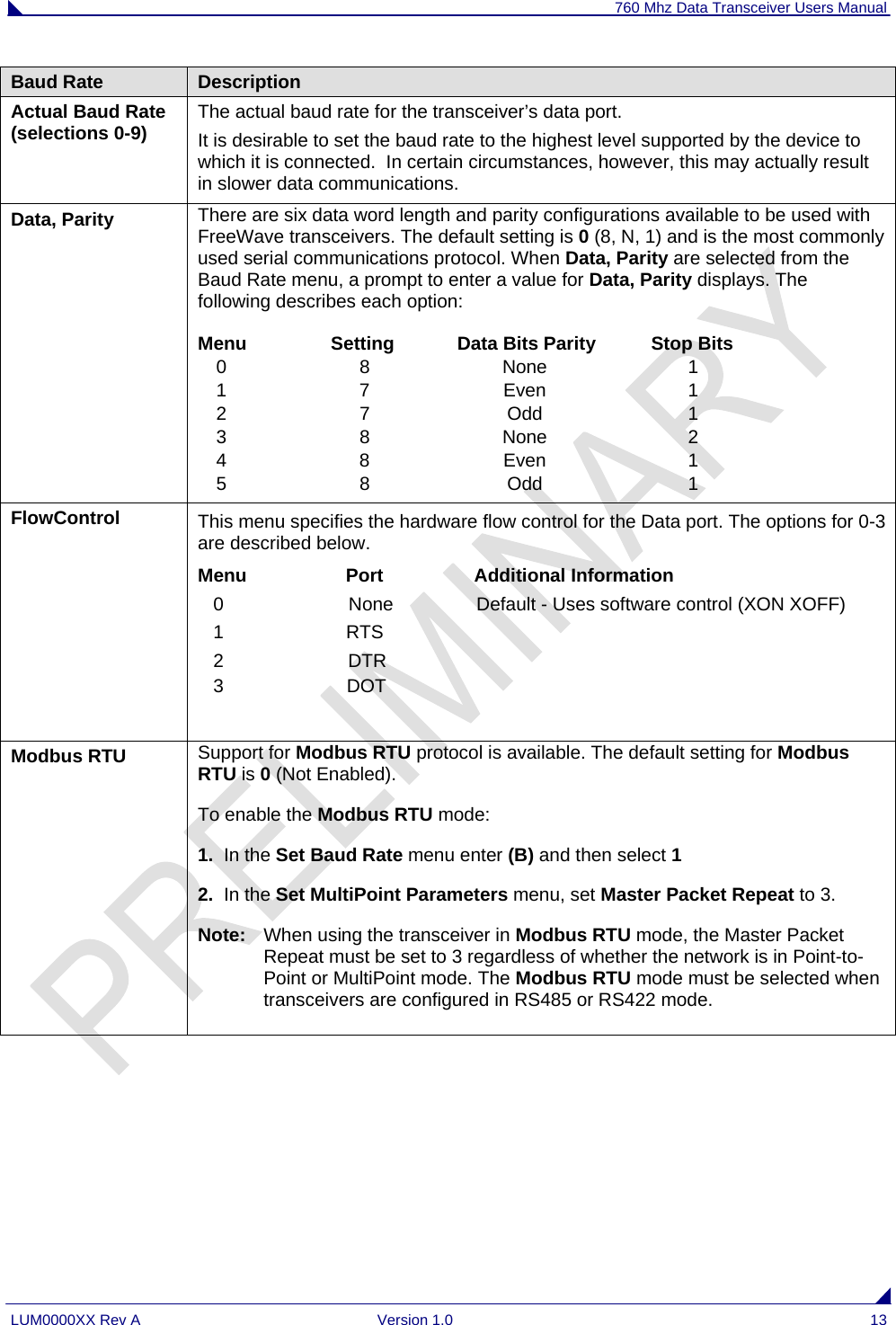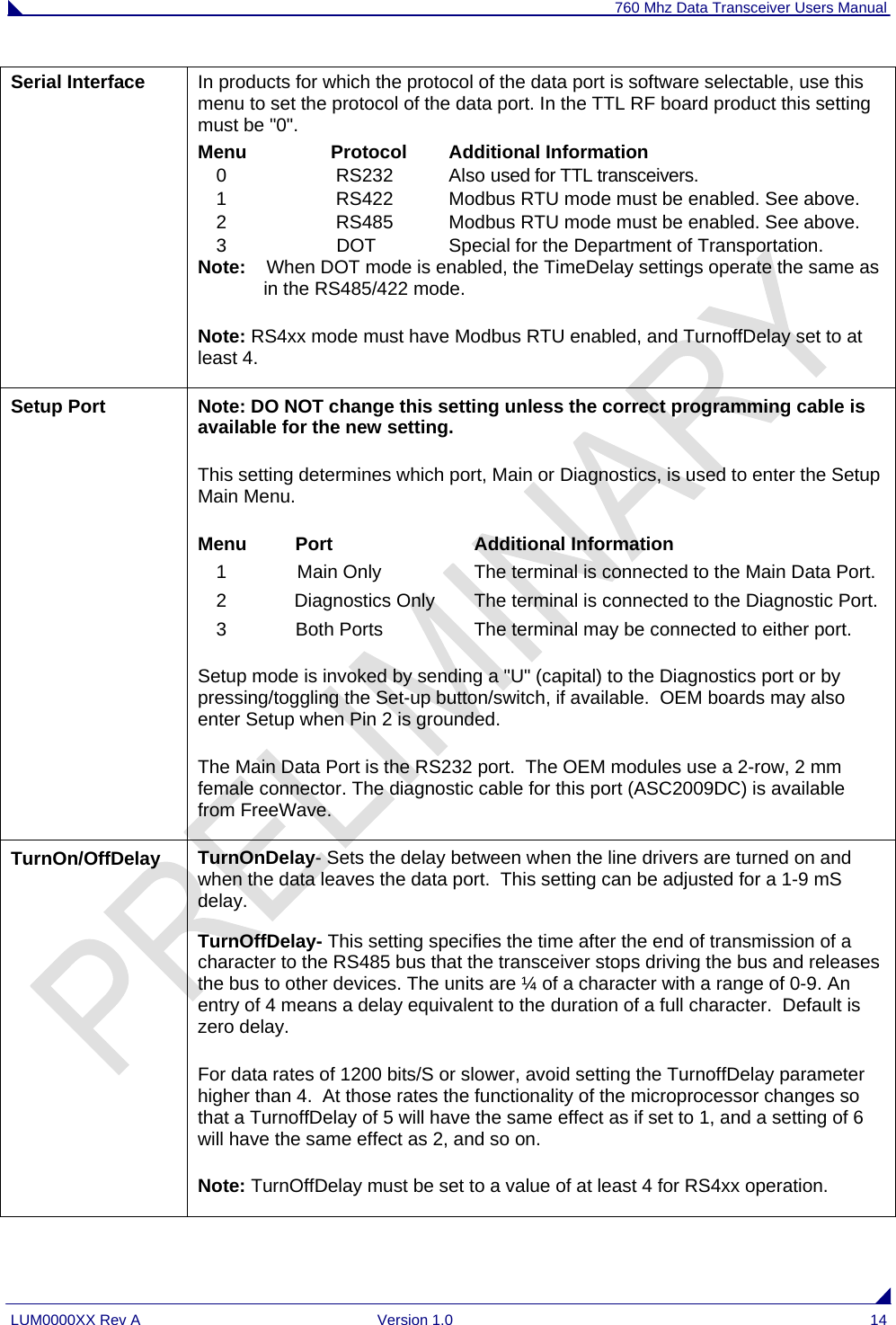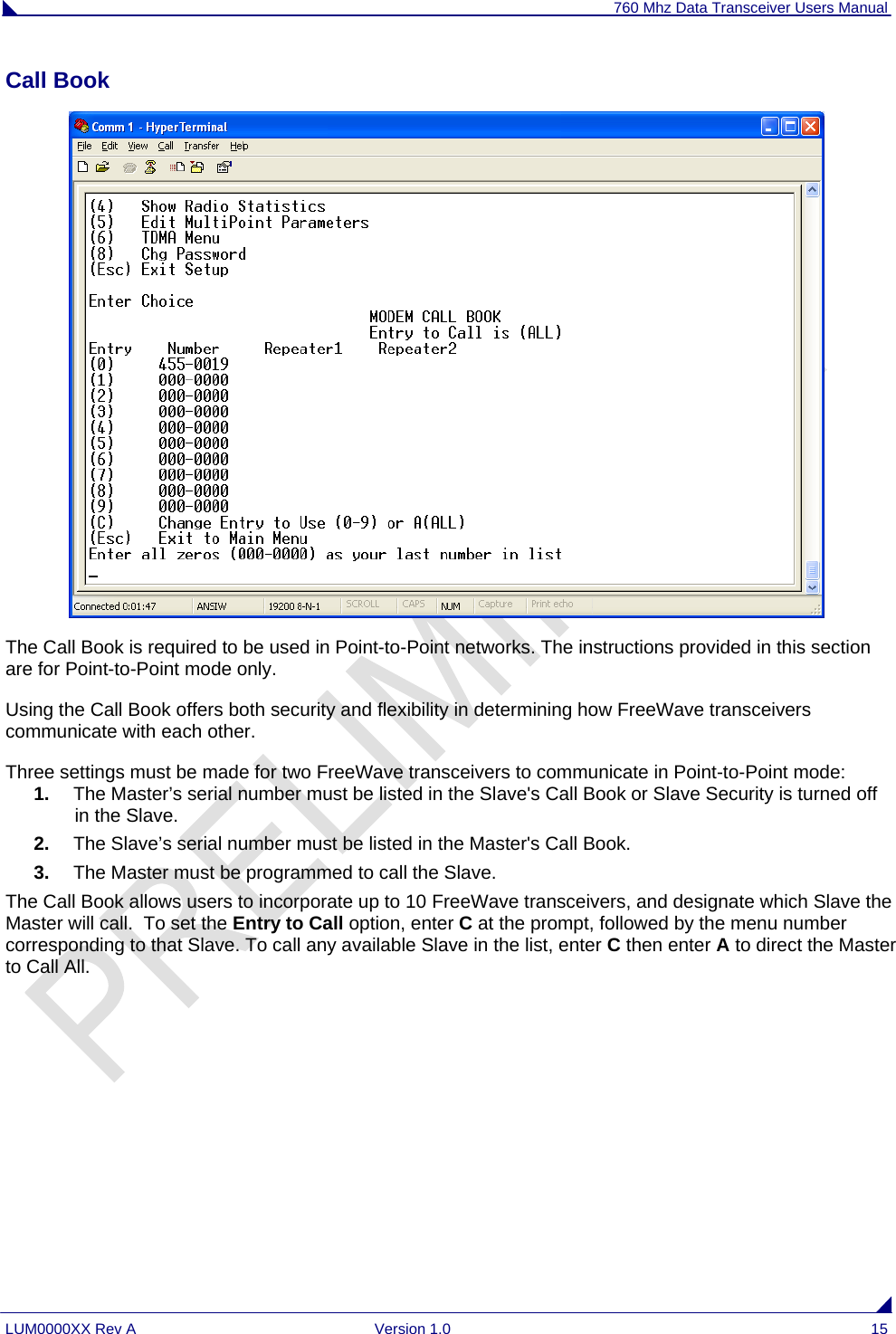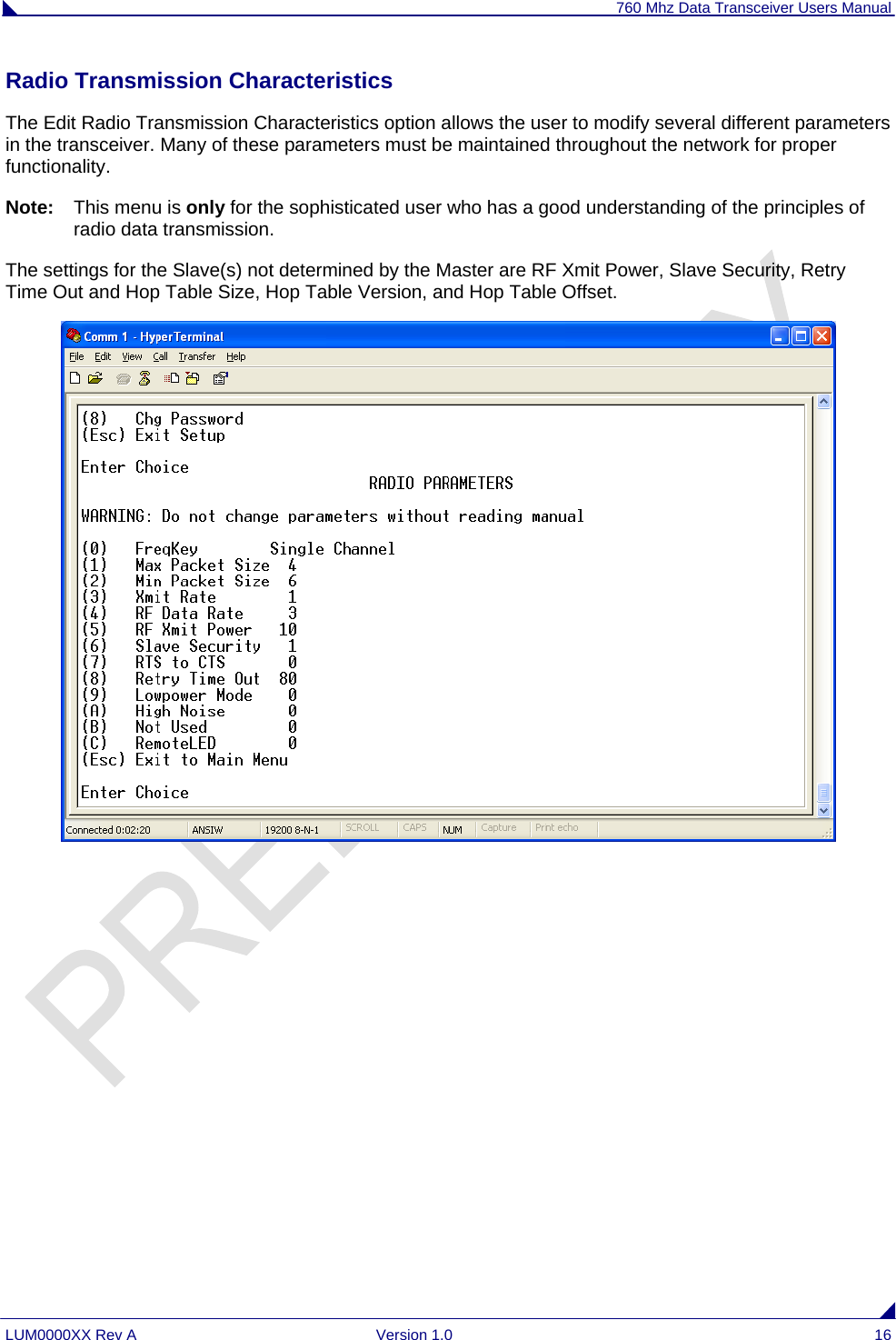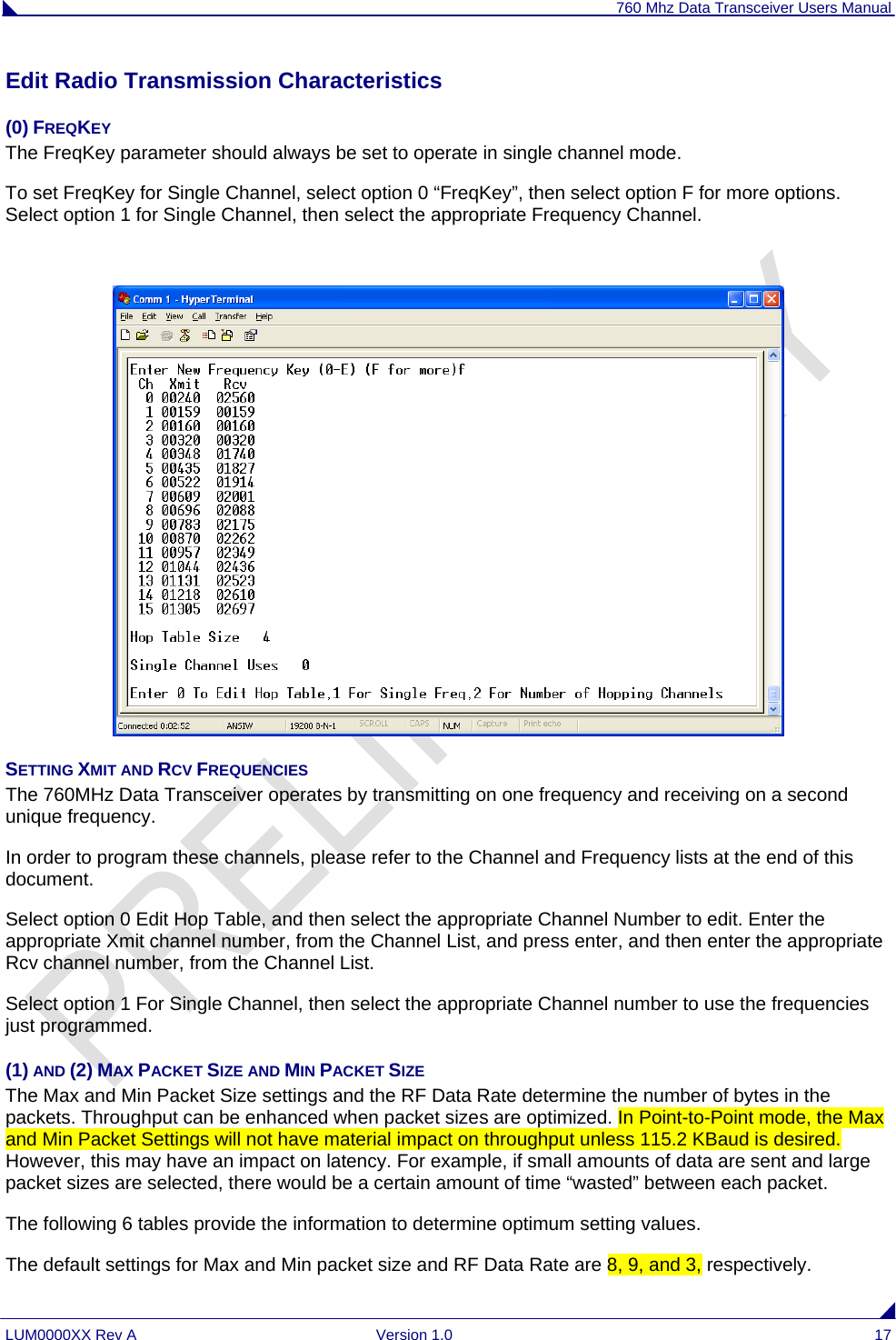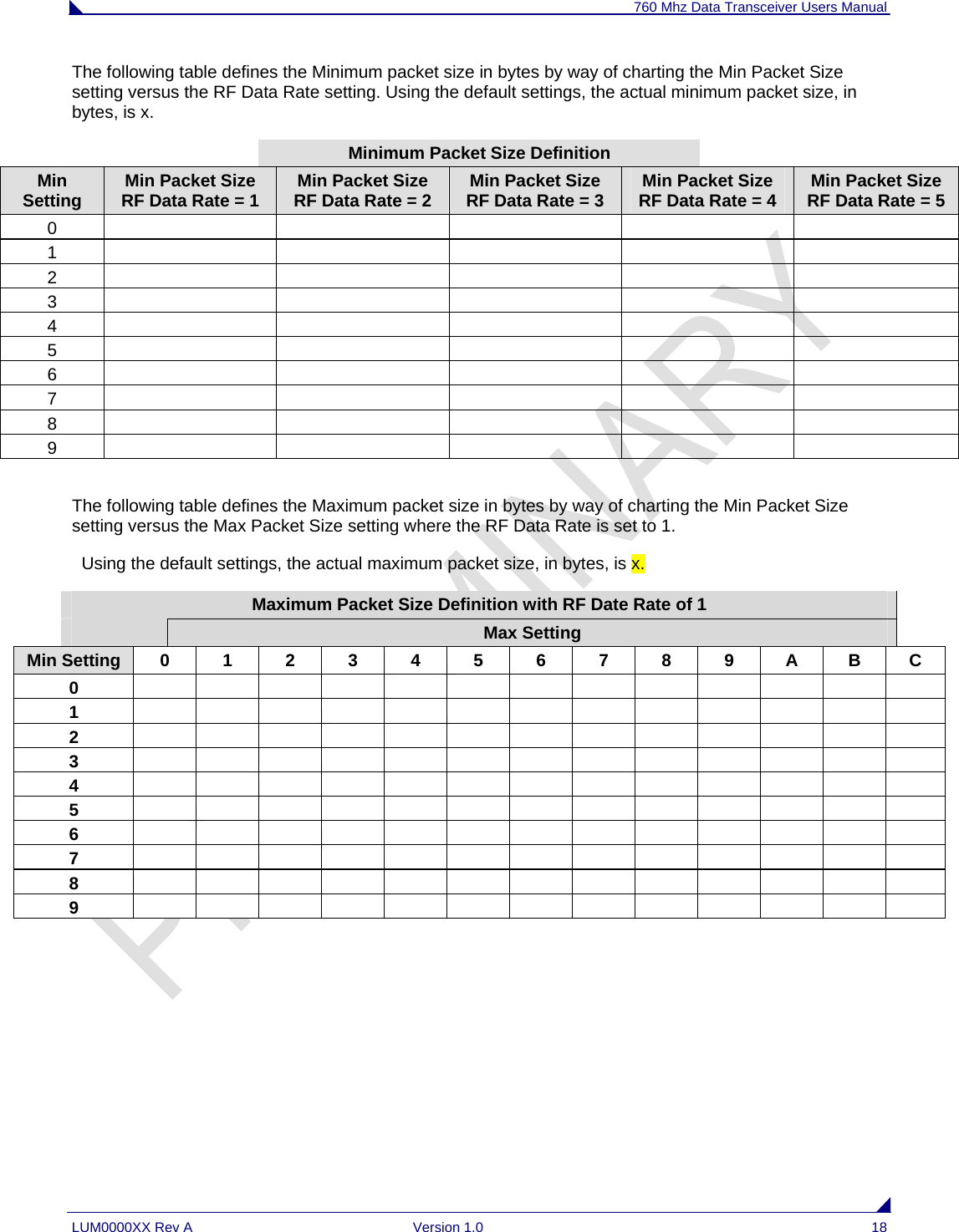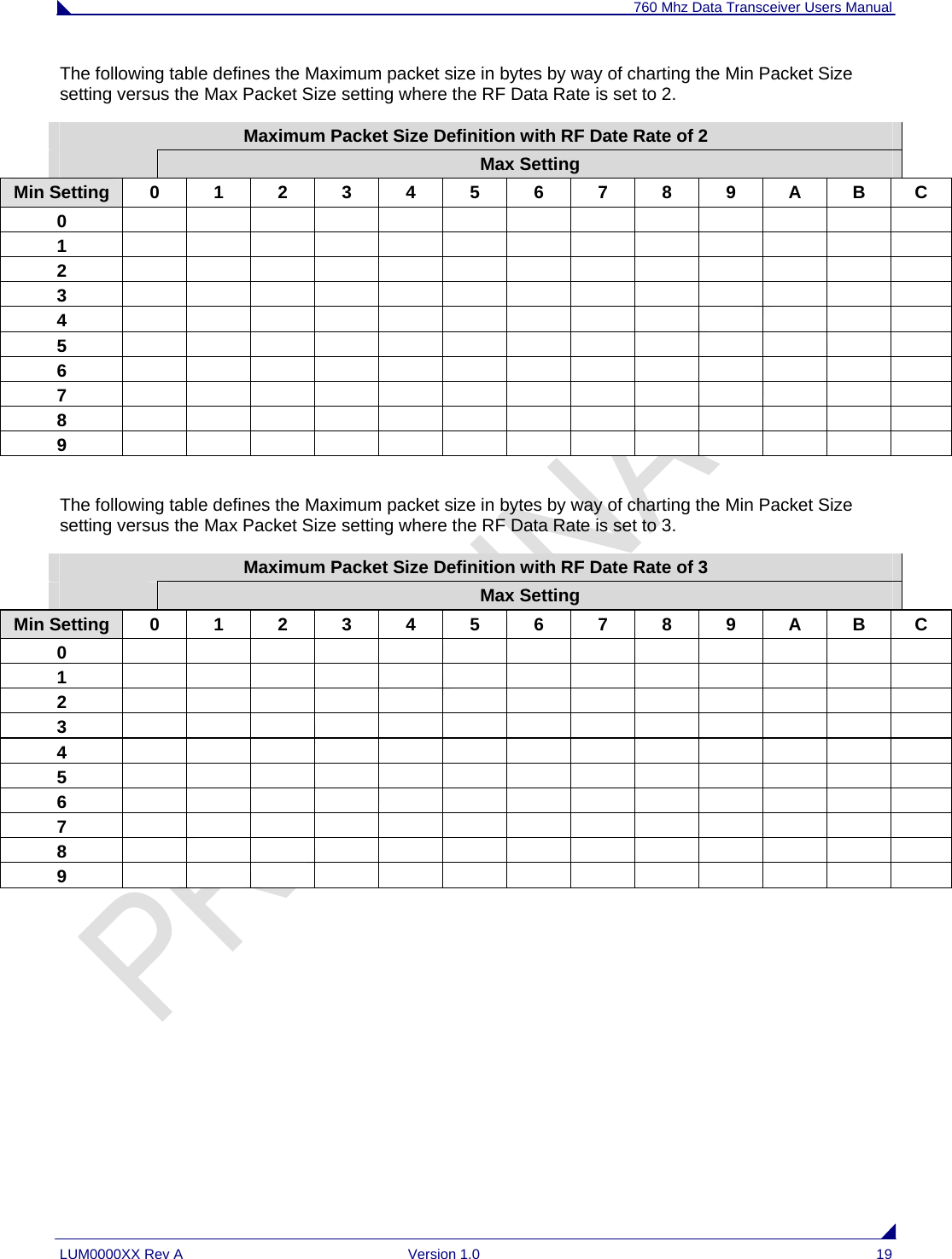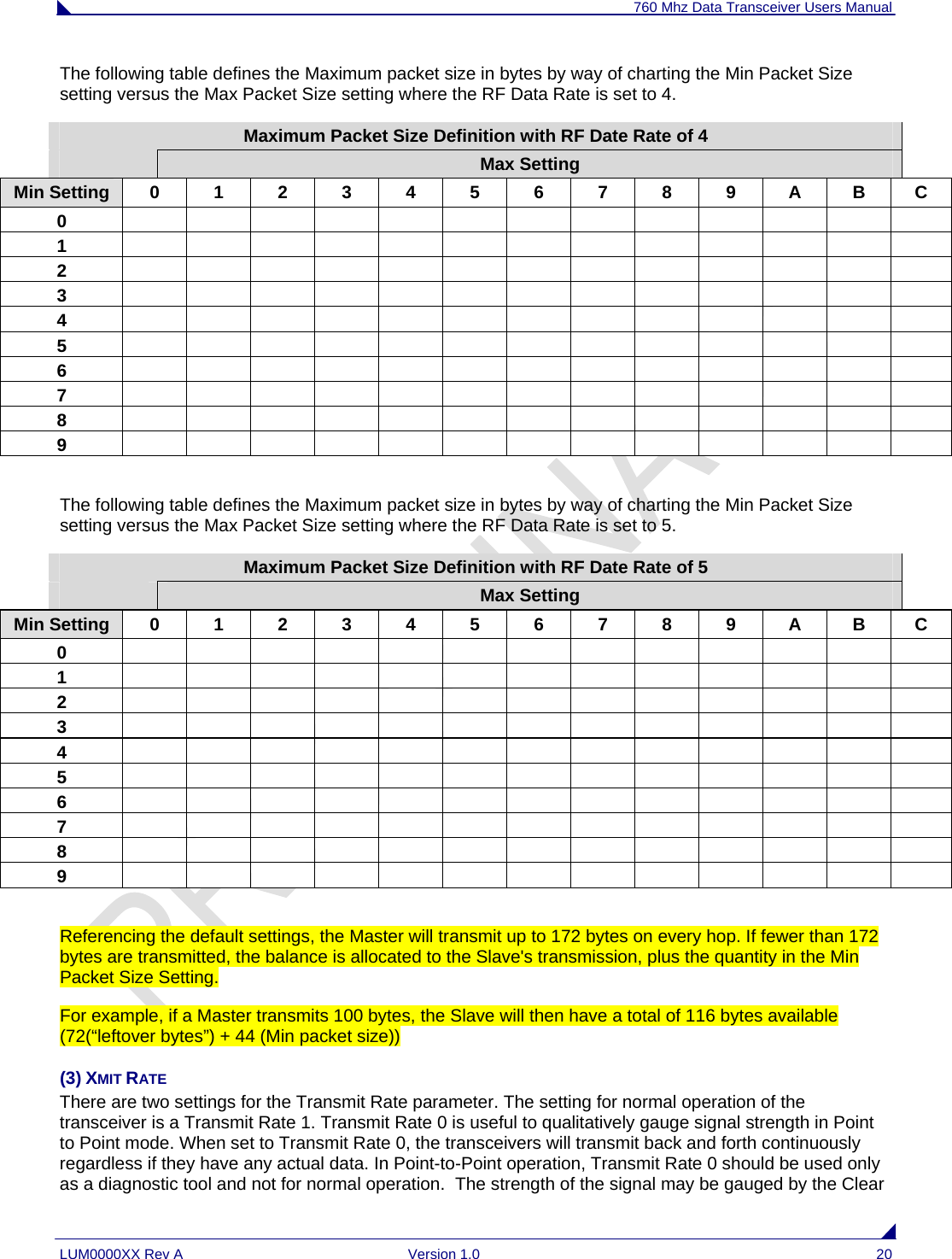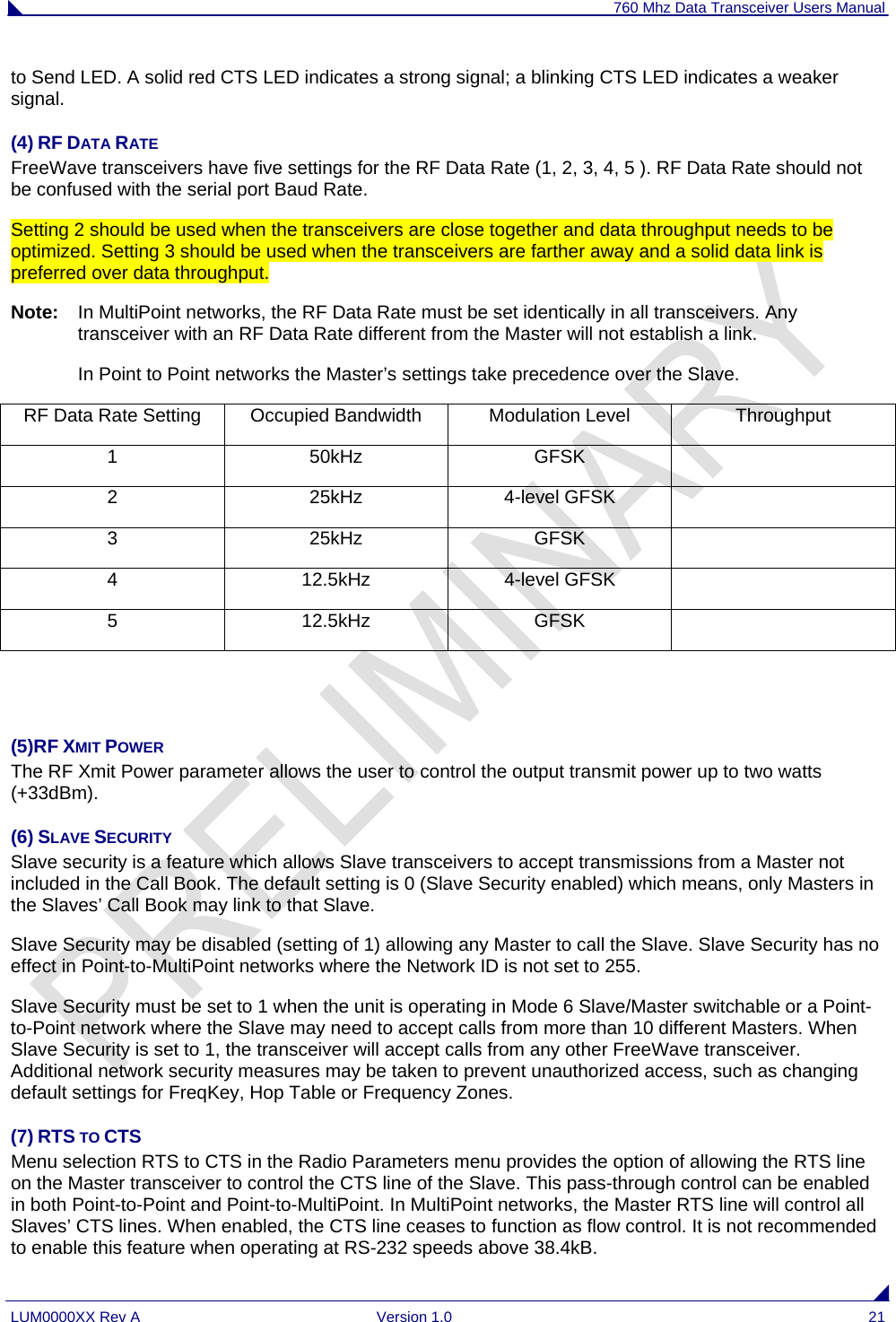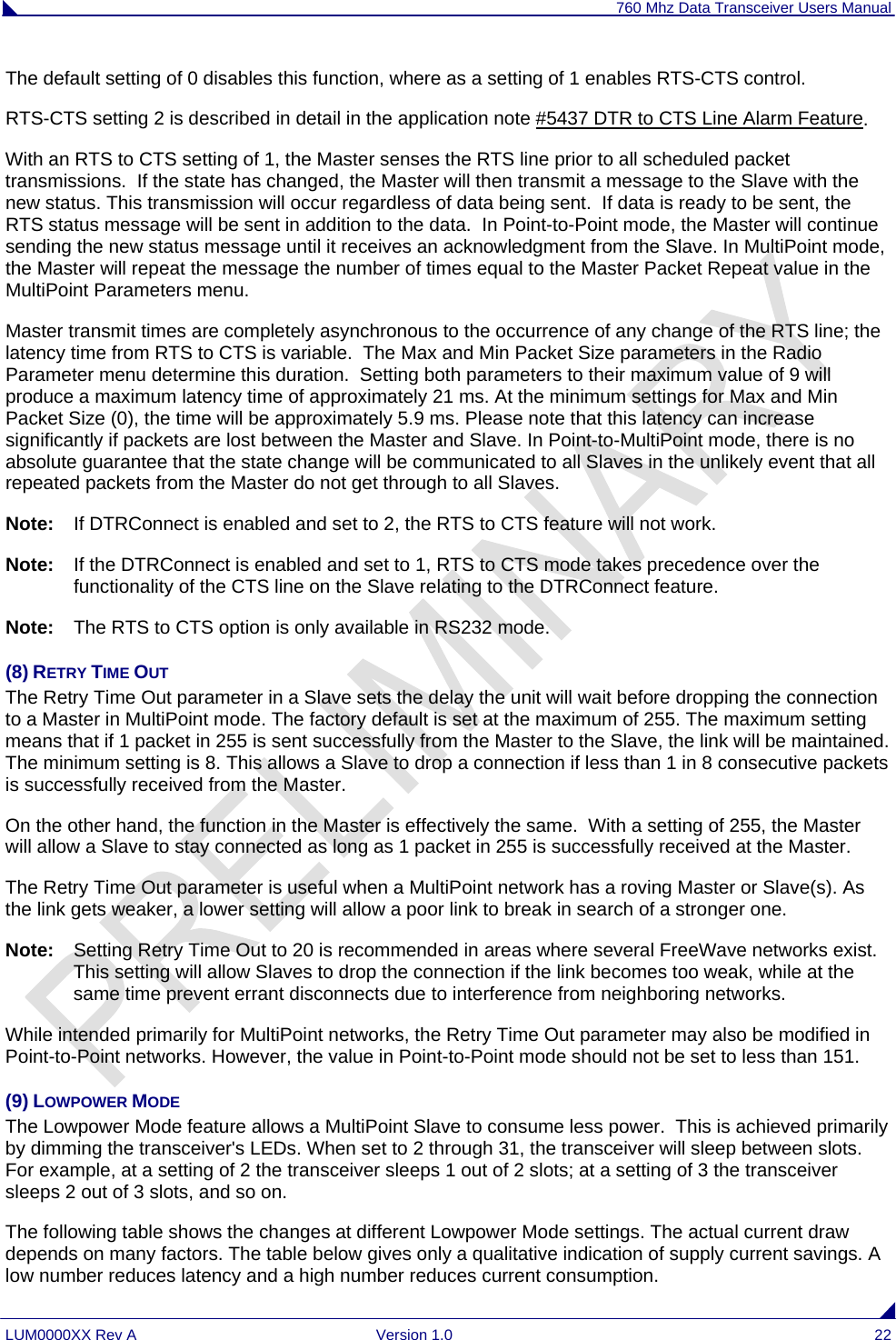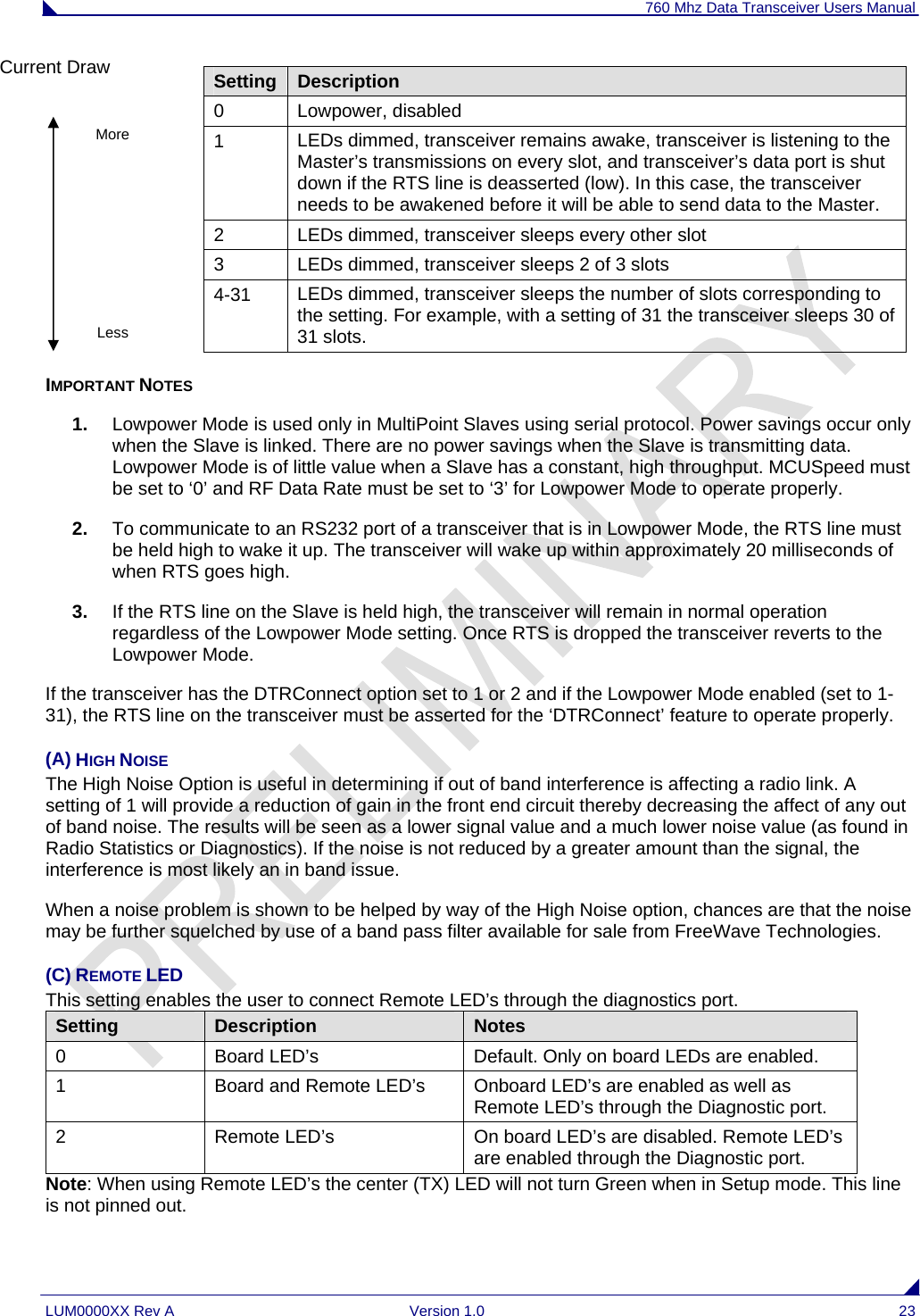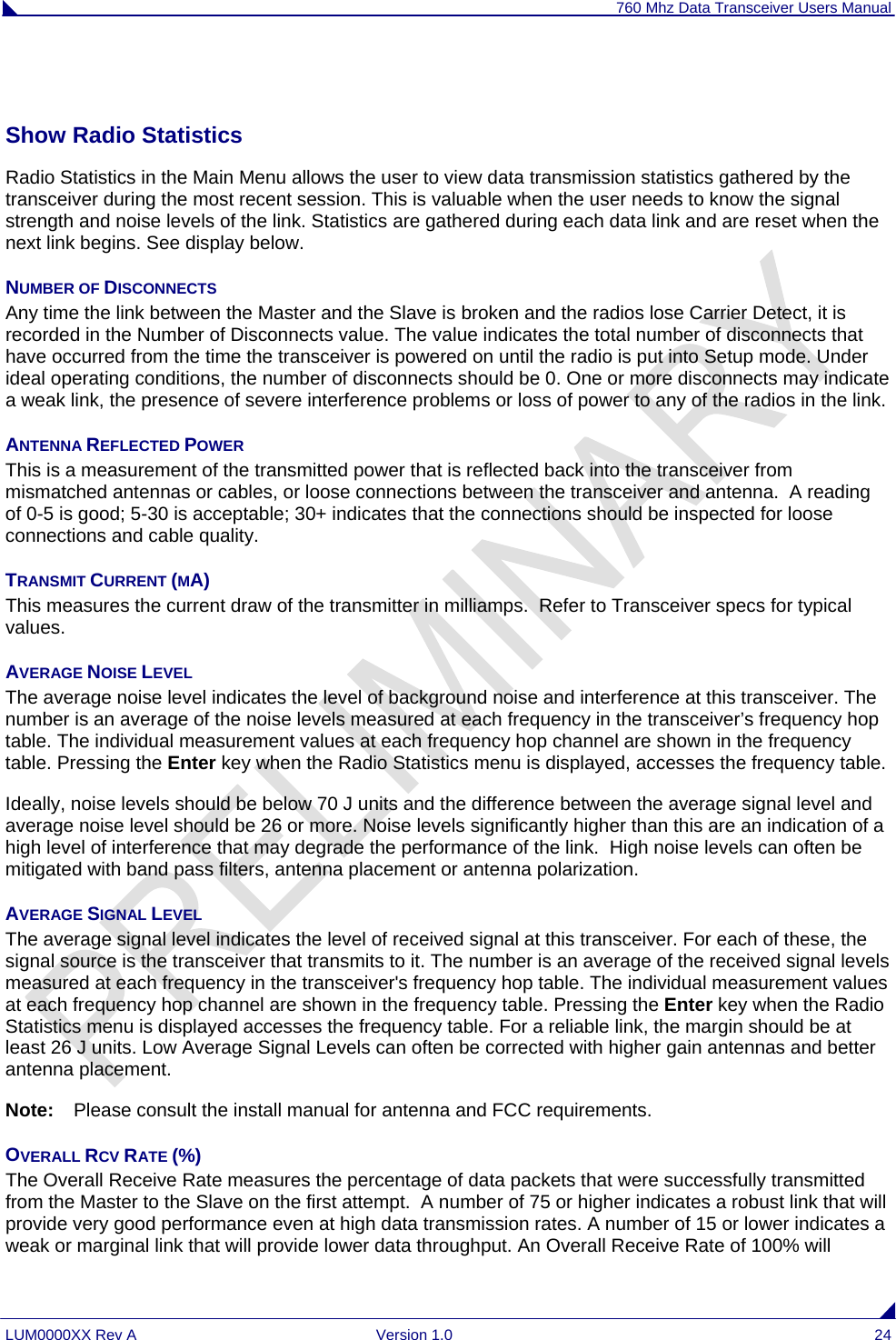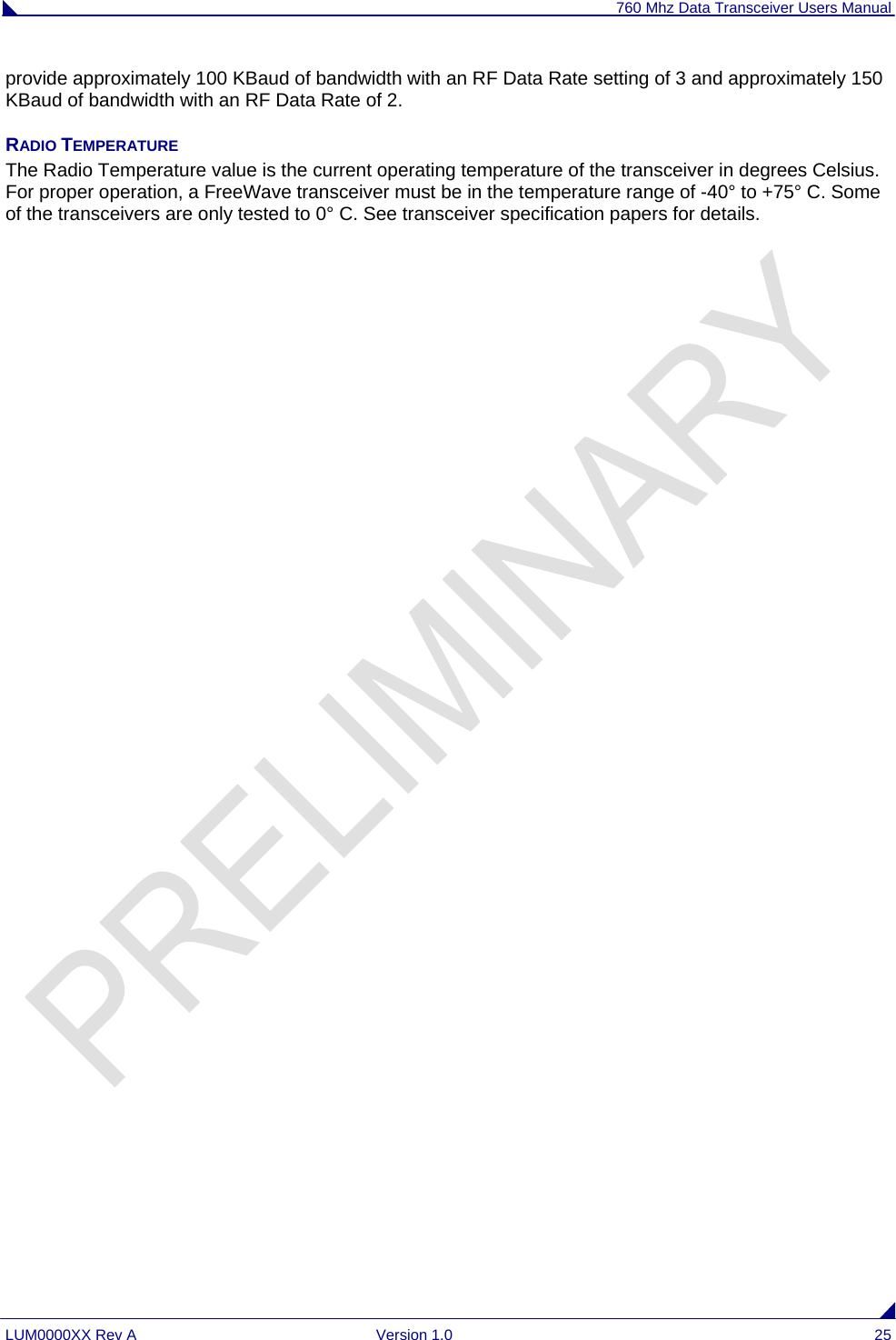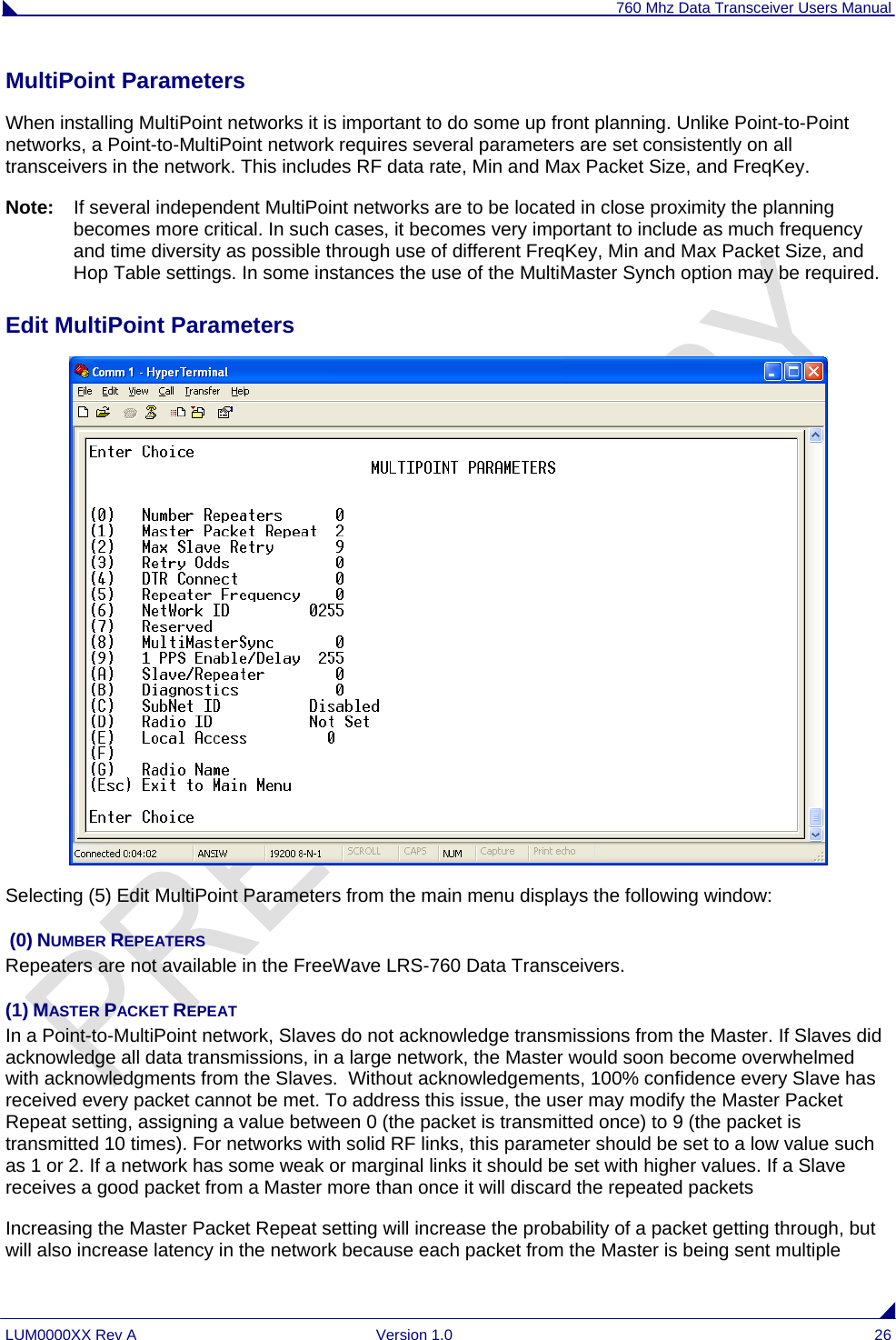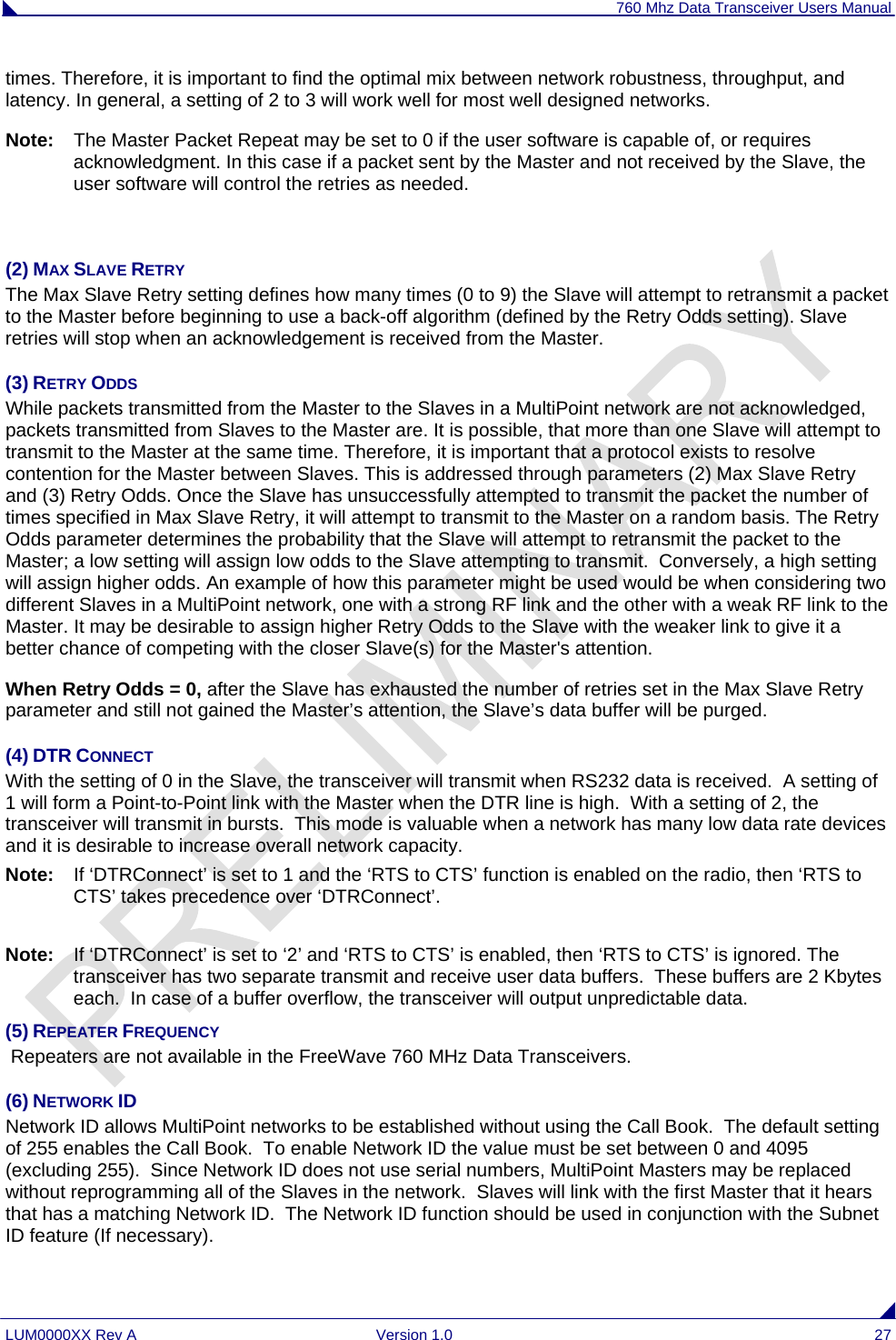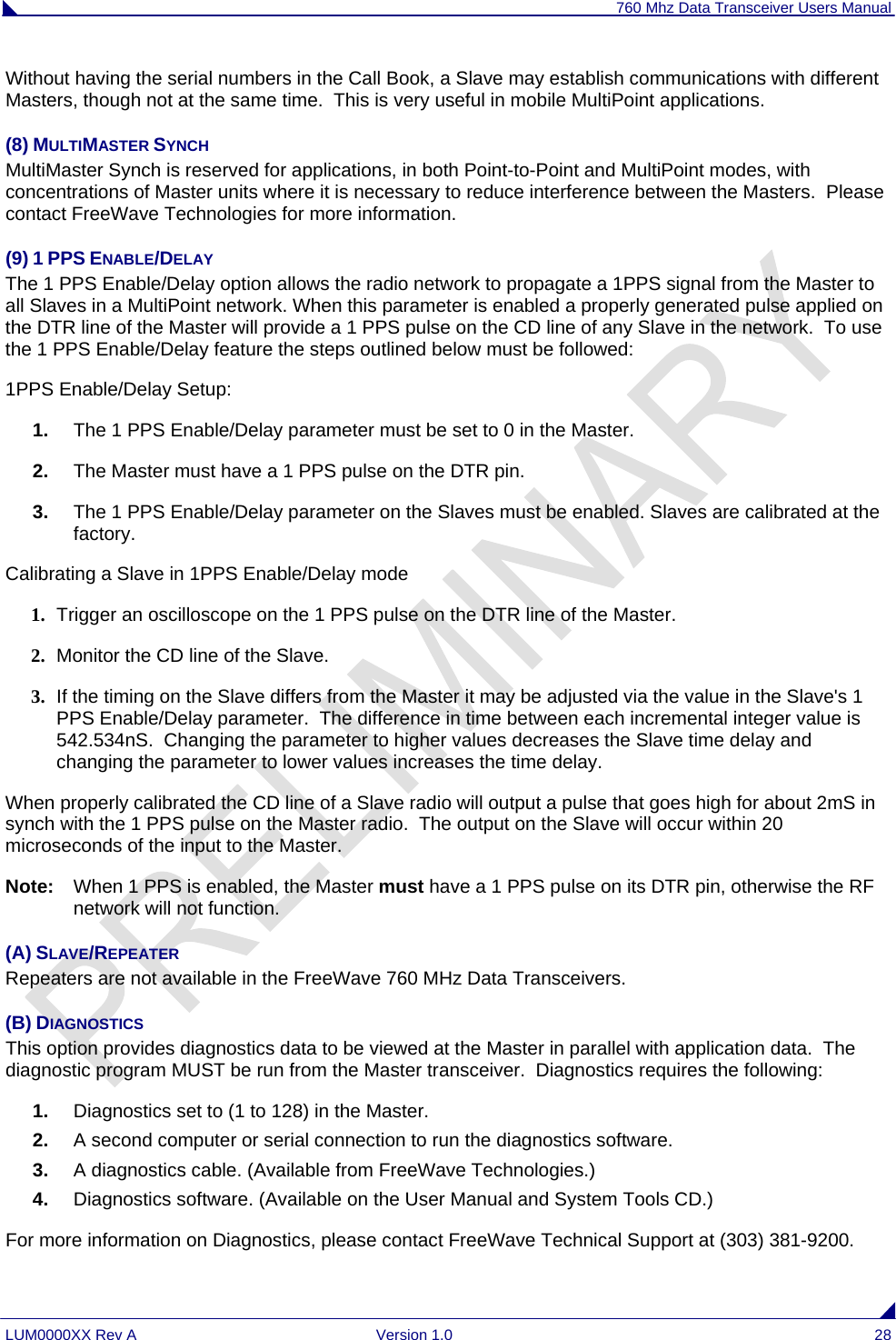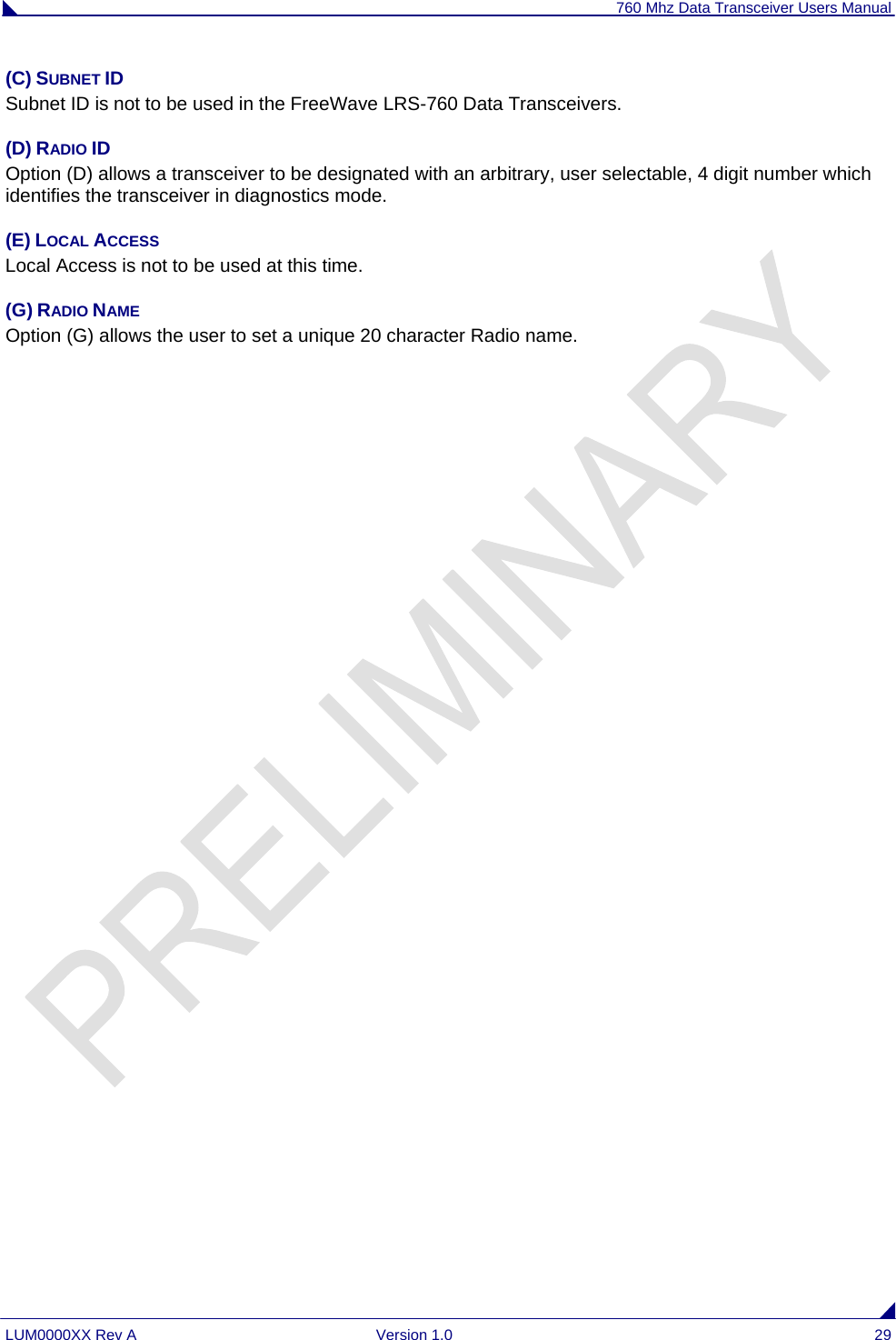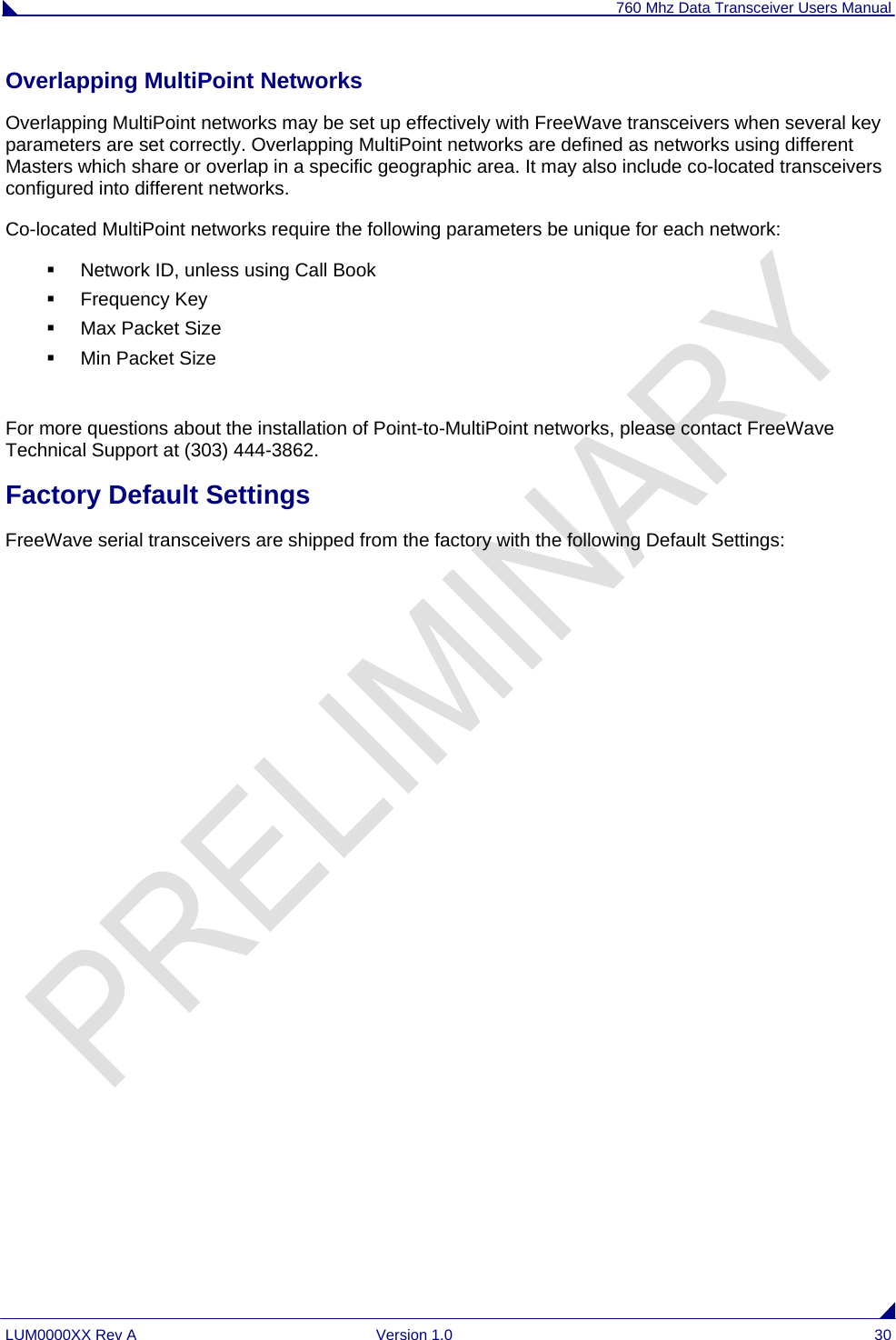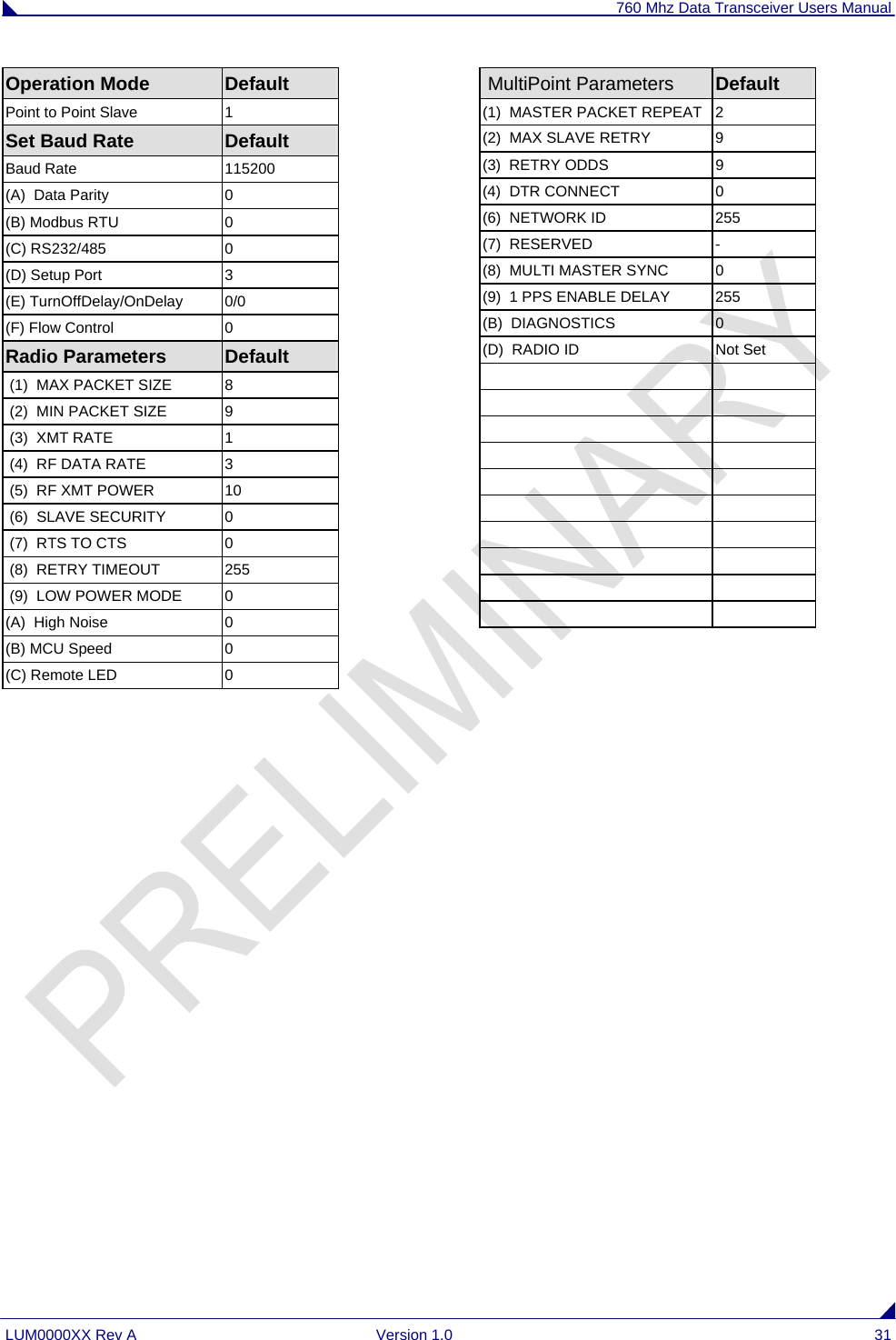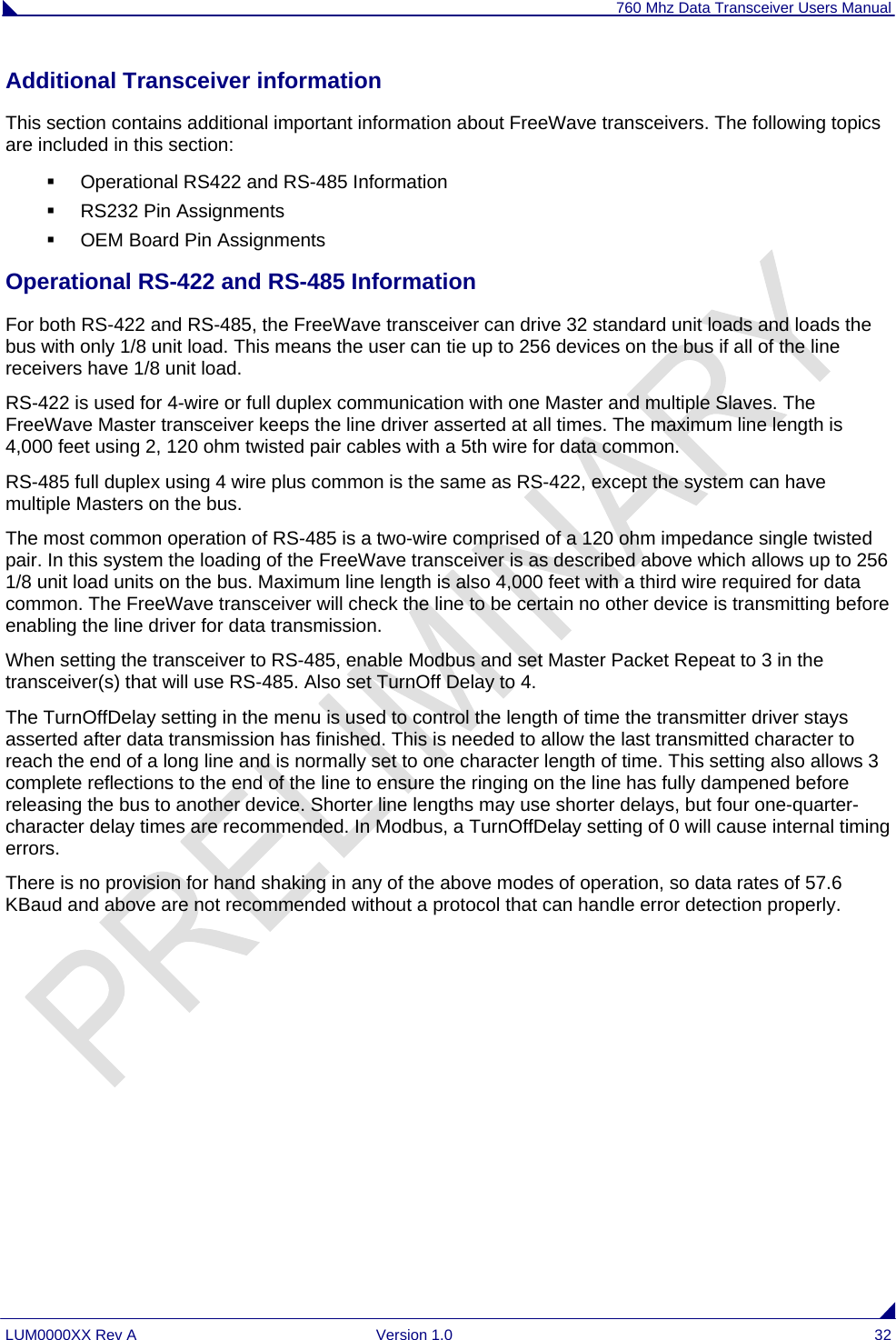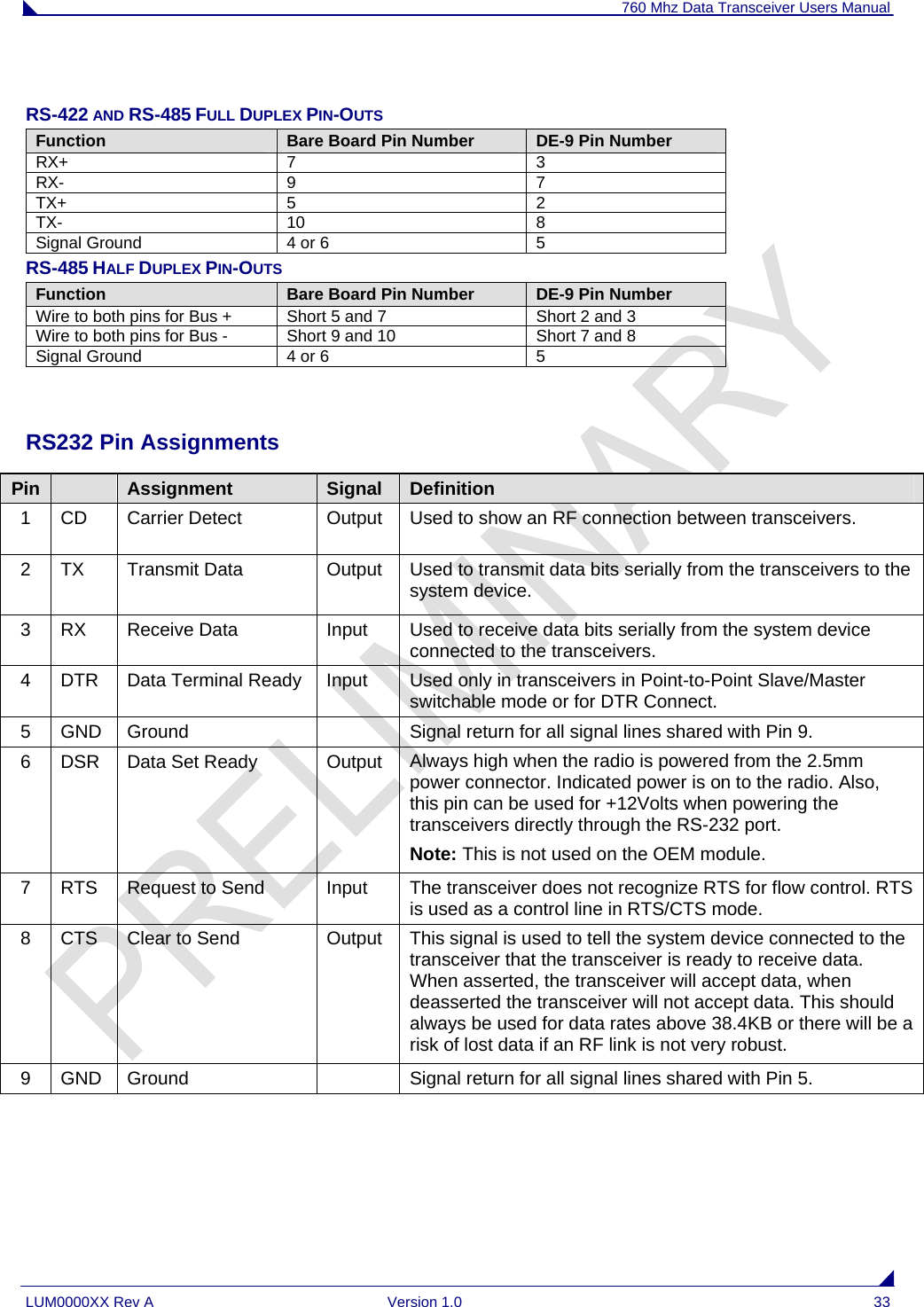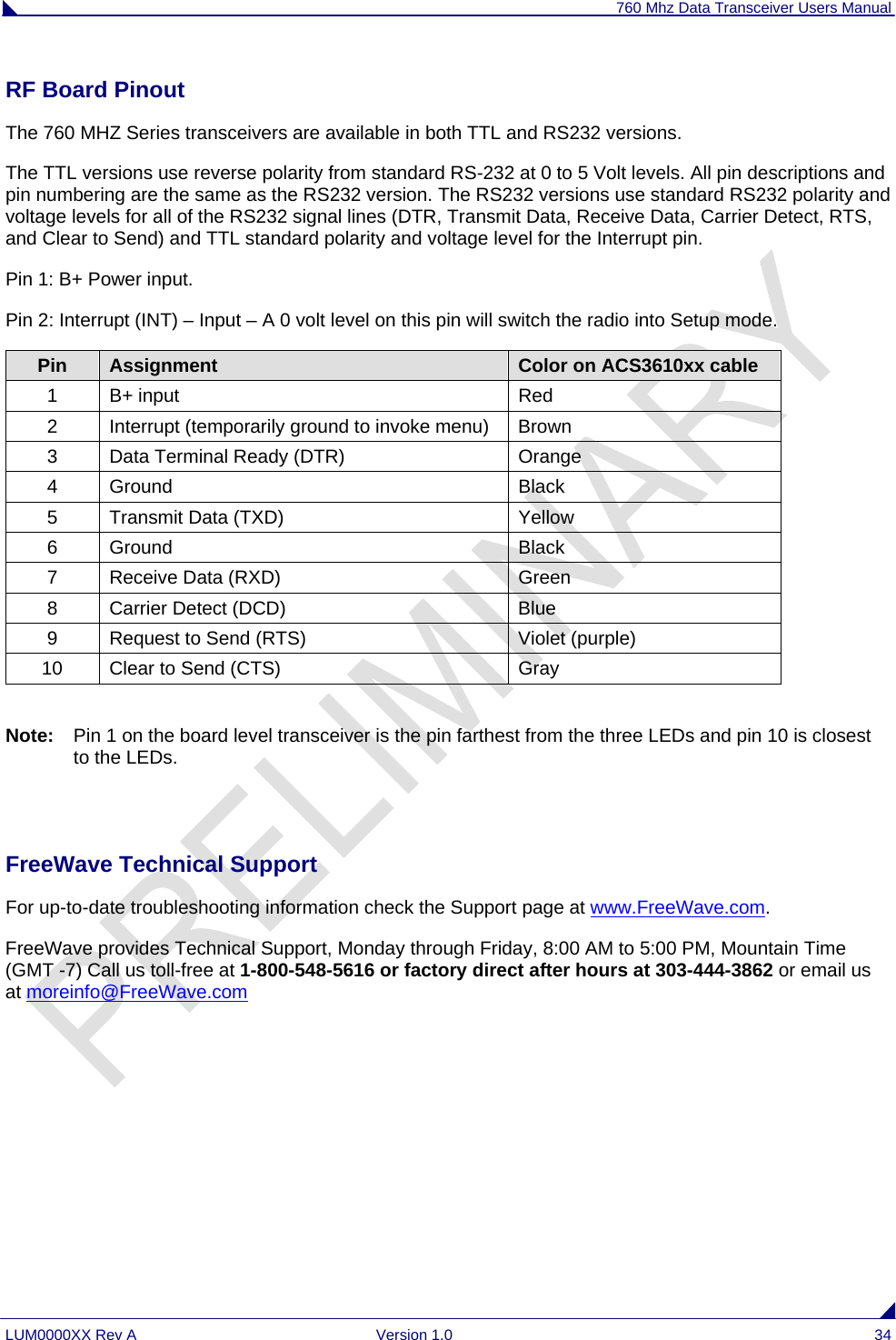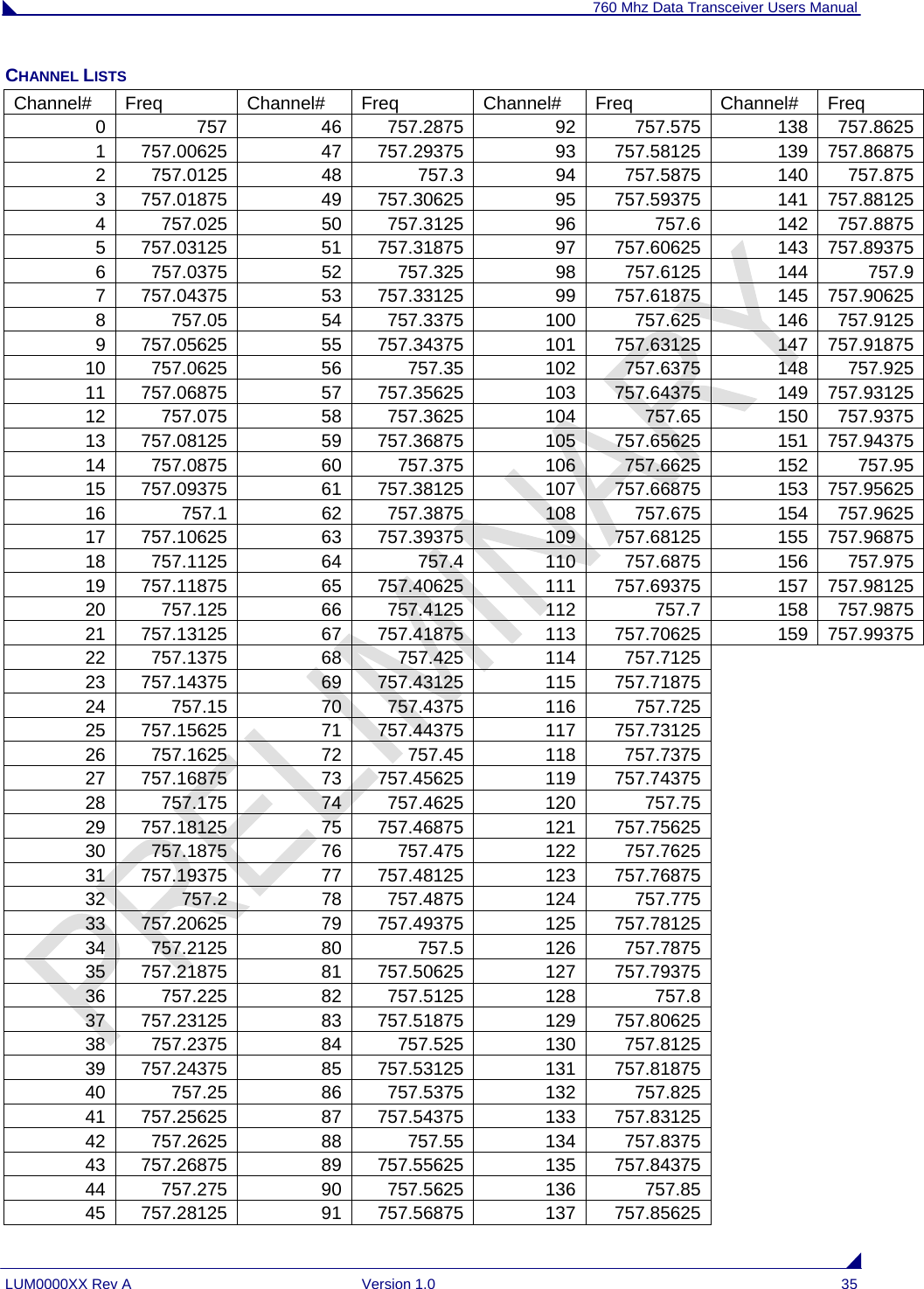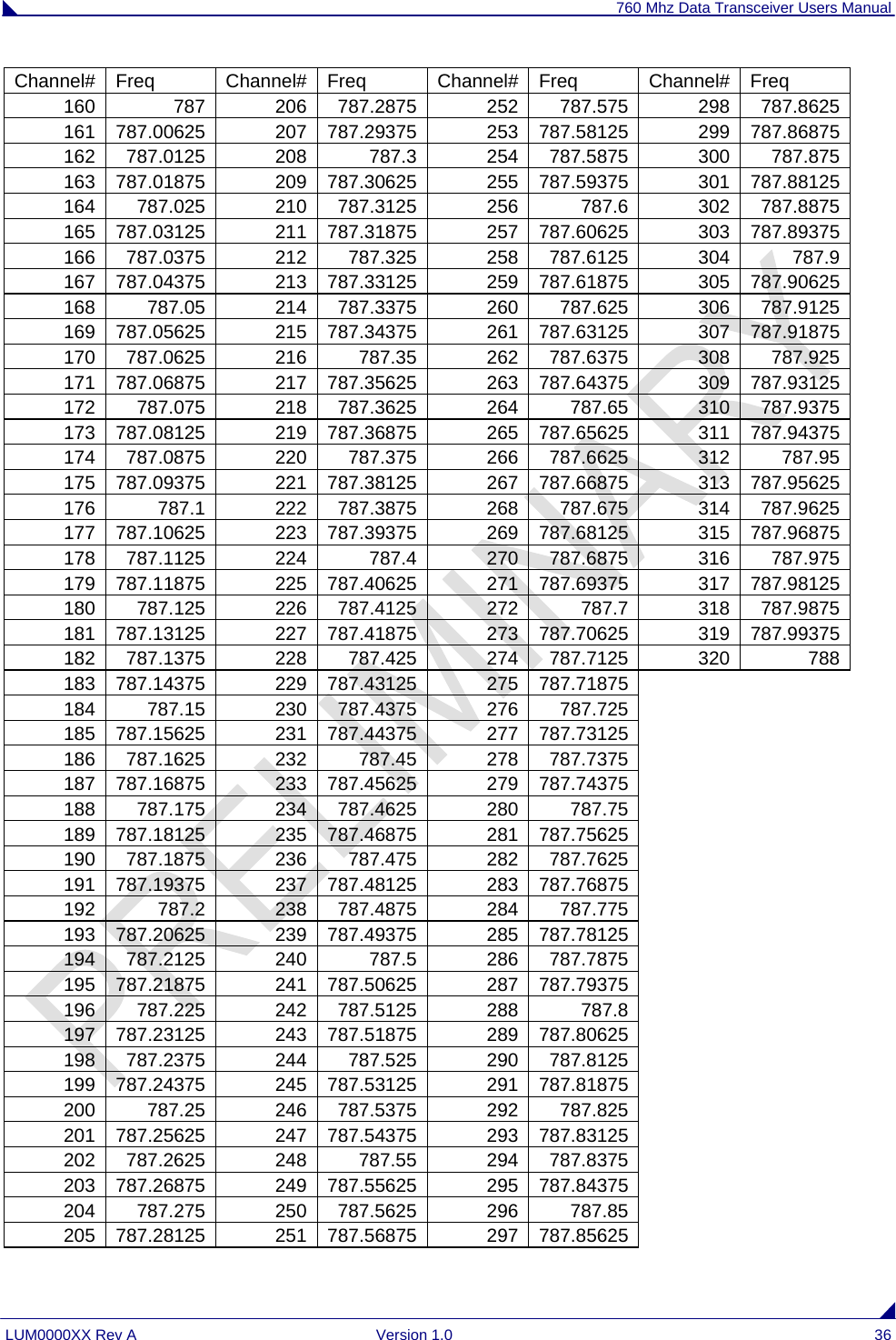FreeWave Technologies 218151431519 757-758MHz and 787-788MHz, 76kbps Over the Air Data Rate, Board Level, Licensed Band Radio, RS232 / RS485, 9-30 volts User Manual 760mhz
FreeWave Technologies Inc. 757-758MHz and 787-788MHz, 76kbps Over the Air Data Rate, Board Level, Licensed Band Radio, RS232 / RS485, 9-30 volts 760mhz
Exhibit D Users Manual per 2 1033 c3
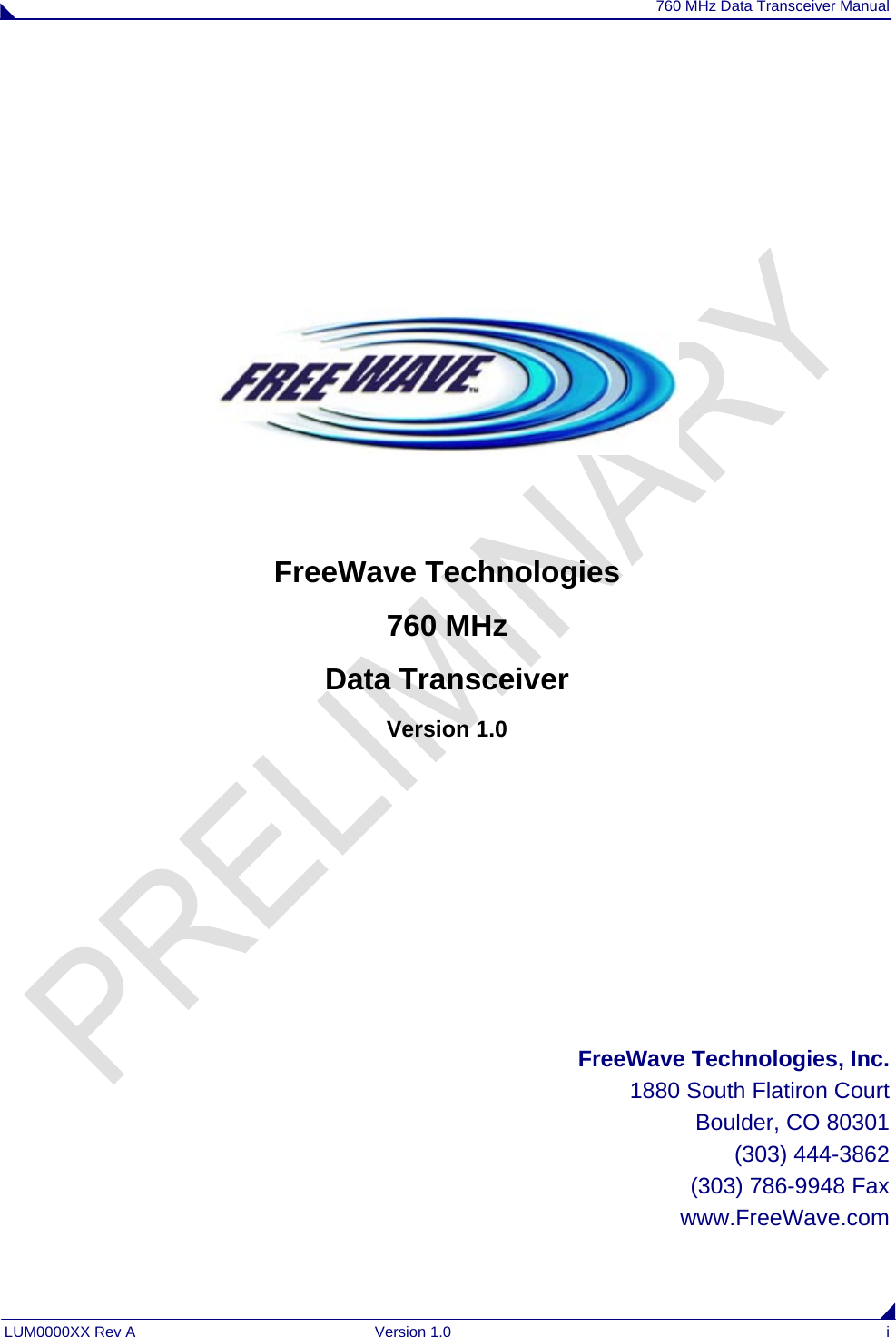
![760 Mhz Data Transceiver Users Manual LUM0000XX Rev A Version 1.0 ii SPREAD SPECTRUM WIRELESS DATA TRANSCEIVER USER MANUAL Copyright © 1995-2008 by FreeWave Technologies, Inc. All rights reserved. Published 2008. WARRANTY FreeWave Technologies warrants your FreeWave® Wireless Data Transceiver against defects in materials and manufacturing for a period of two years from the date of shipment. In the event of a Product failure due to materials or workmanship, FreeWave will, at its option, repair or replace the Product. The Product must be returned to FreeWave upon receiving a Return Material Authorization (RMA) for evaluation of Warranty Coverage. In no event will FreeWave Technologies Inc., its suppliers, and its licensors be liable for any damages arising from the use of or inability to use this Product. This includes business interruption, loss of business information, or other loss which may arise from the use of this Product. Please be advised that OEM customer’s warranty periods may vary. Warranty Policy may not apply: 1. If Product repair, adjustments or parts replacements is required due to accident, neglect, unusual physical, electrical or electromagnetic stress. 2. If Product is used outside of FreeWave specifications. 3. If Product has been modified, repaired or altered by Customer unless FreeWave specifically authorized such alterations in each instance in writing. This includes the addition of conformal coating. [dupe of above]Special Rate Replacement Option A special rate replacement option is offered to non-warranty returns or upgrades. The option to purchase the replacement unit at this special rate is only valid for that RMA. The special replacement rate option expires if not exercised within 30 days of final disposition of RMA. RESTRICTED RIGHTS Any product names mentioned in this manual may be trademarks, or registered trademarks of their respective companies and are hereby acknowledged. Information in this manual is subject to change without notice and is proprietary and confidential to FreeWave Technologies, Inc. This manual is for use by purchasers and other authorized users of the FreeWave® Wireless Data Transceiver only. No part of this manual may be reproduced or transmitted in any form or by any means, electronic or mechanical, or for any purpose without the express written permission of FreeWave Technologies, Inc. FreeWave’s Spread Spectrum Wireless Data Transceivers are designed and manufactured in the United States of America. Printed in the United States of America.](https://usermanual.wiki/FreeWave-Technologies/218151431519/User-Guide-1039075-Page-2.png)
